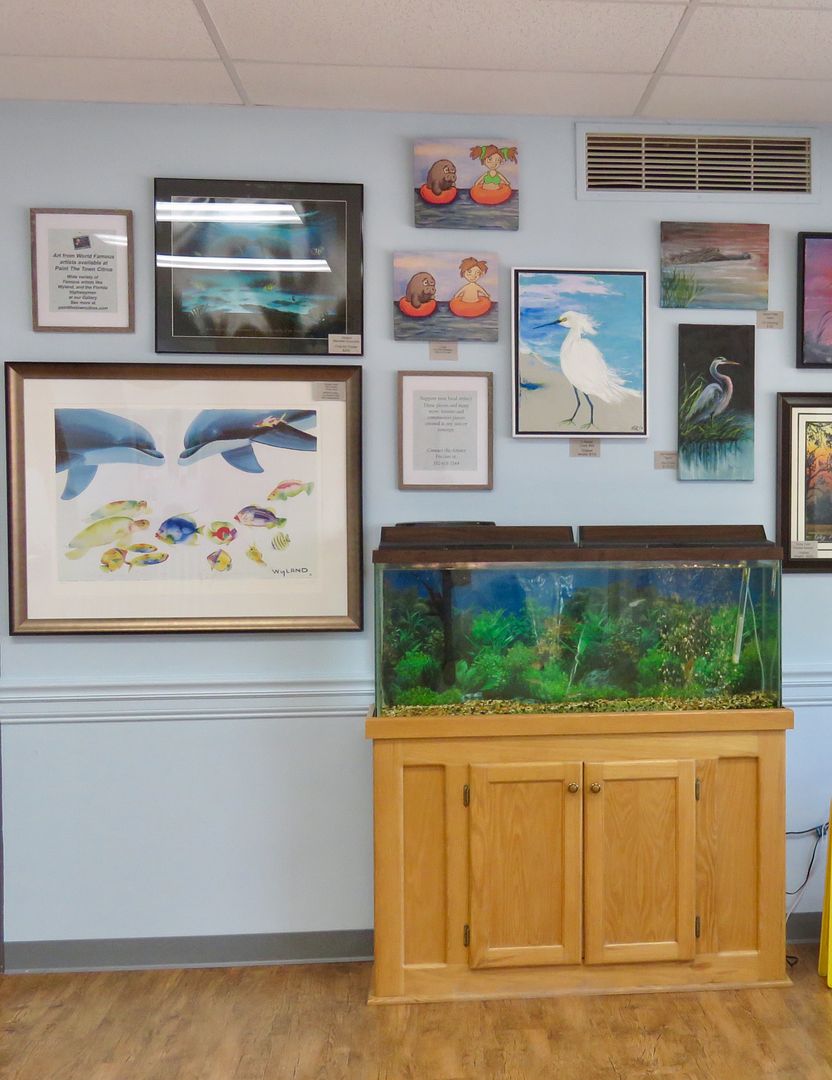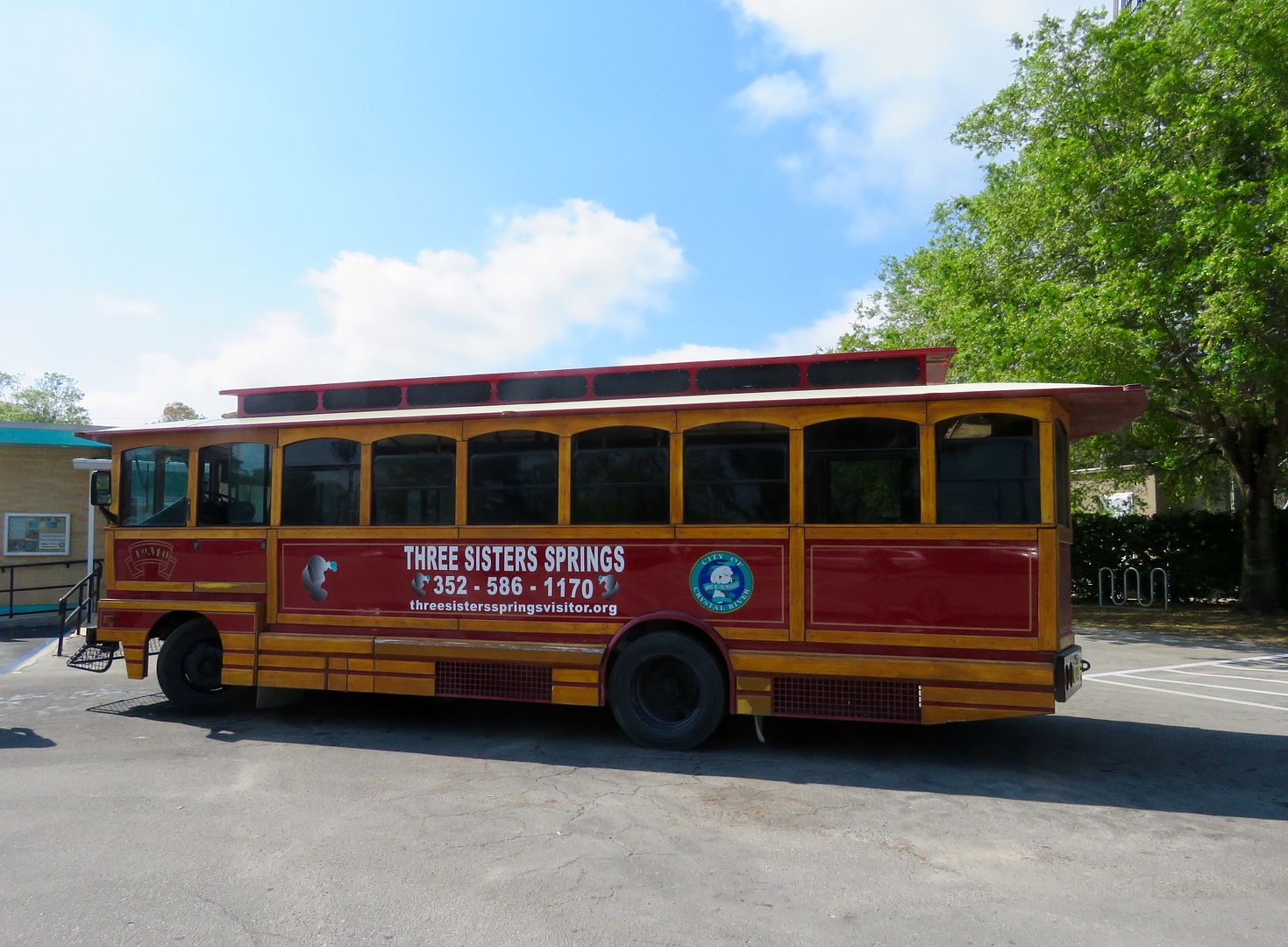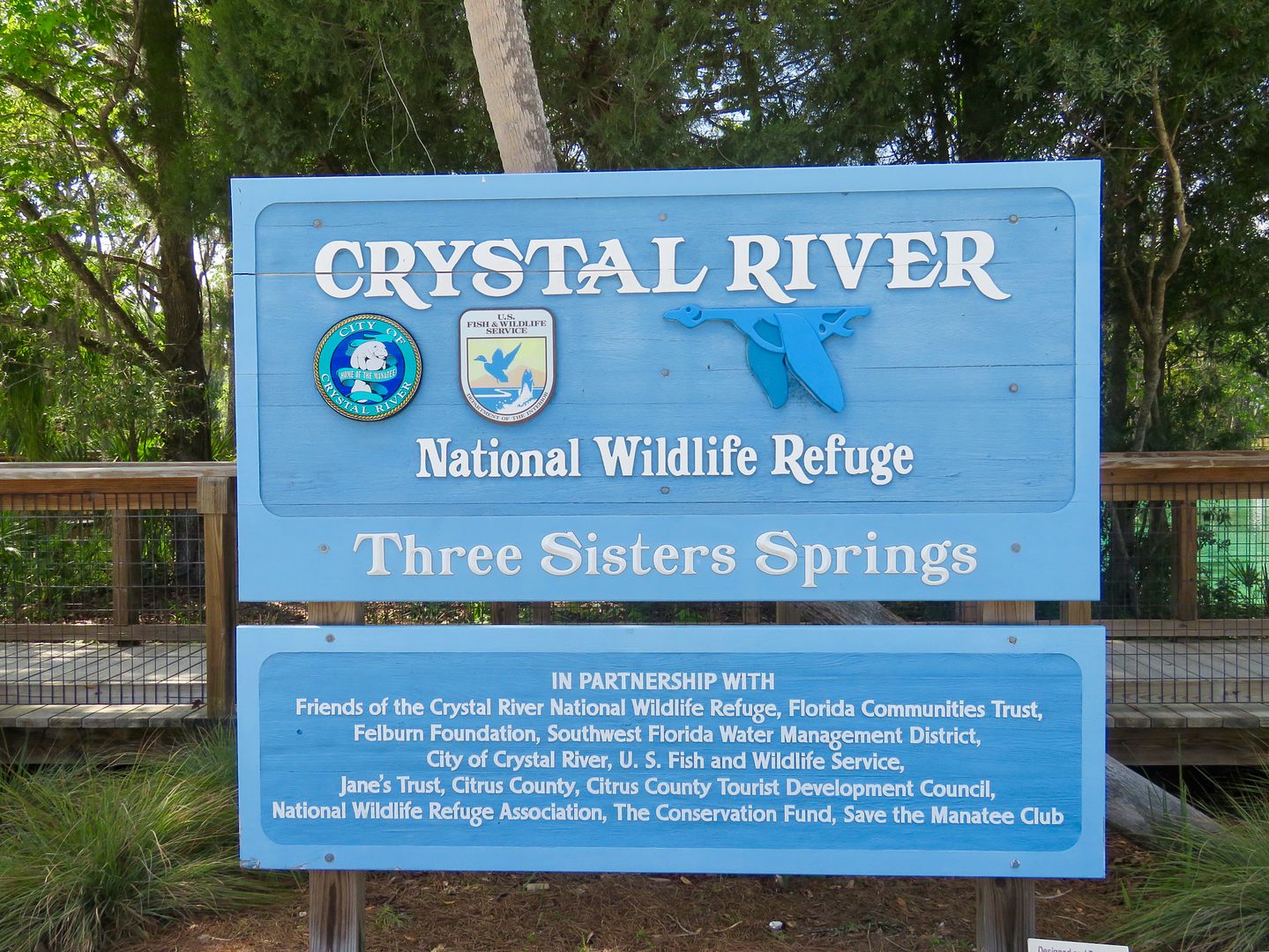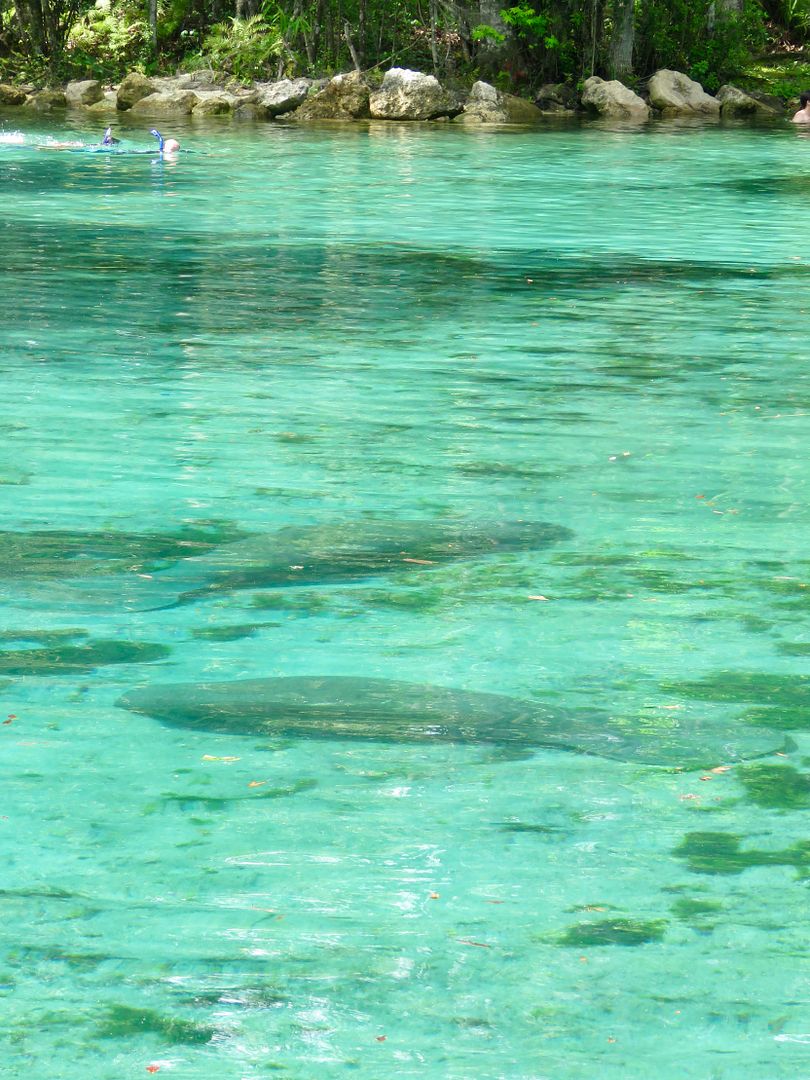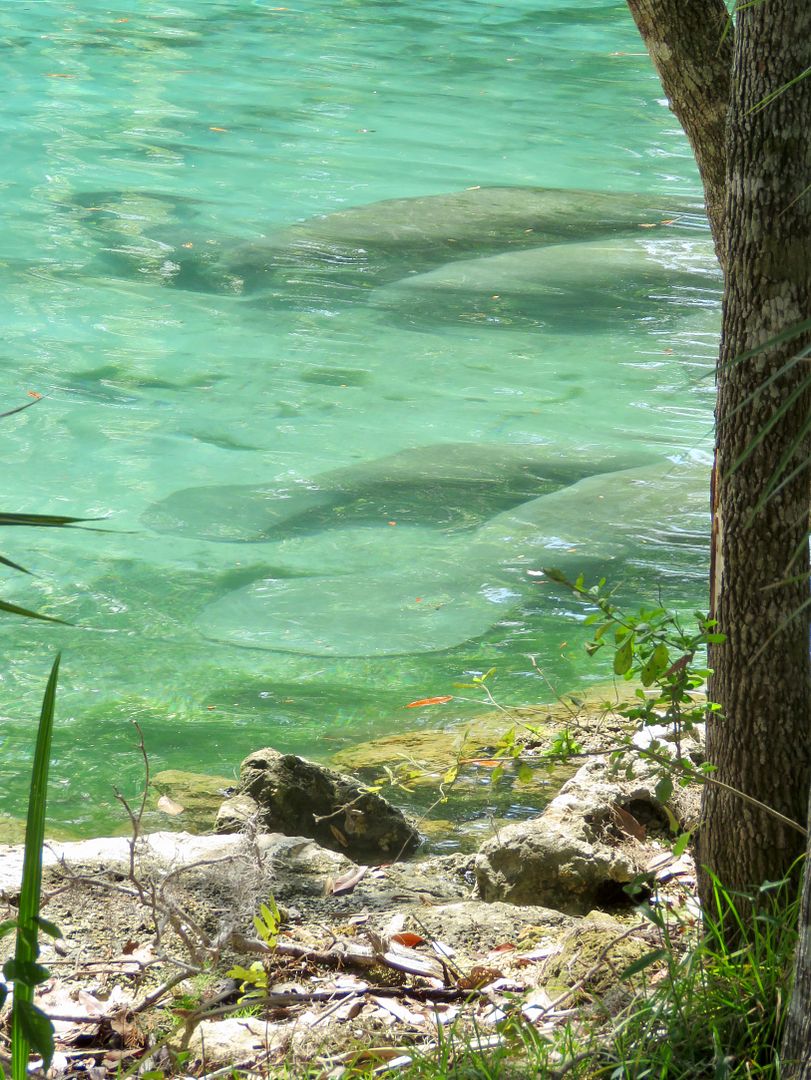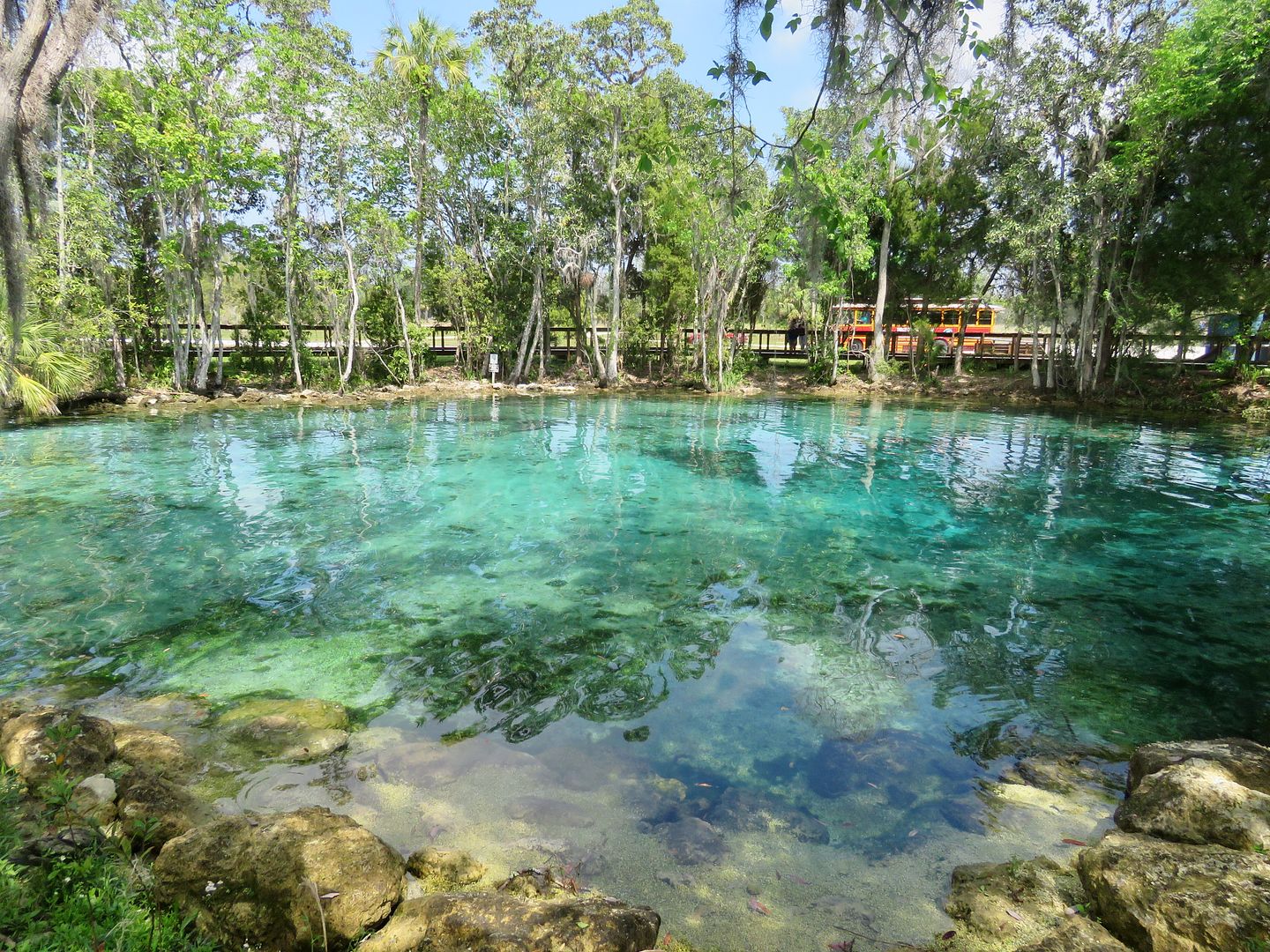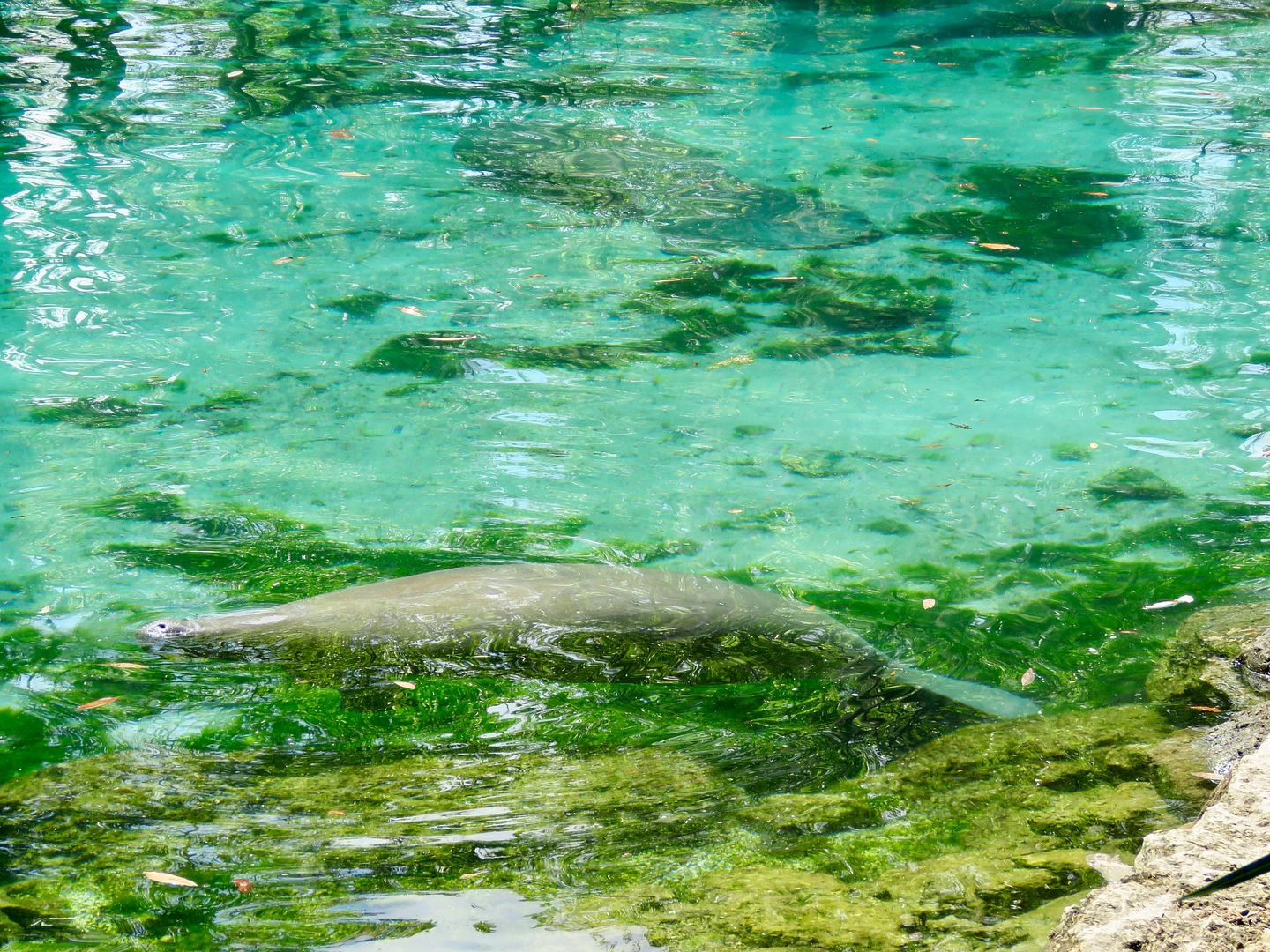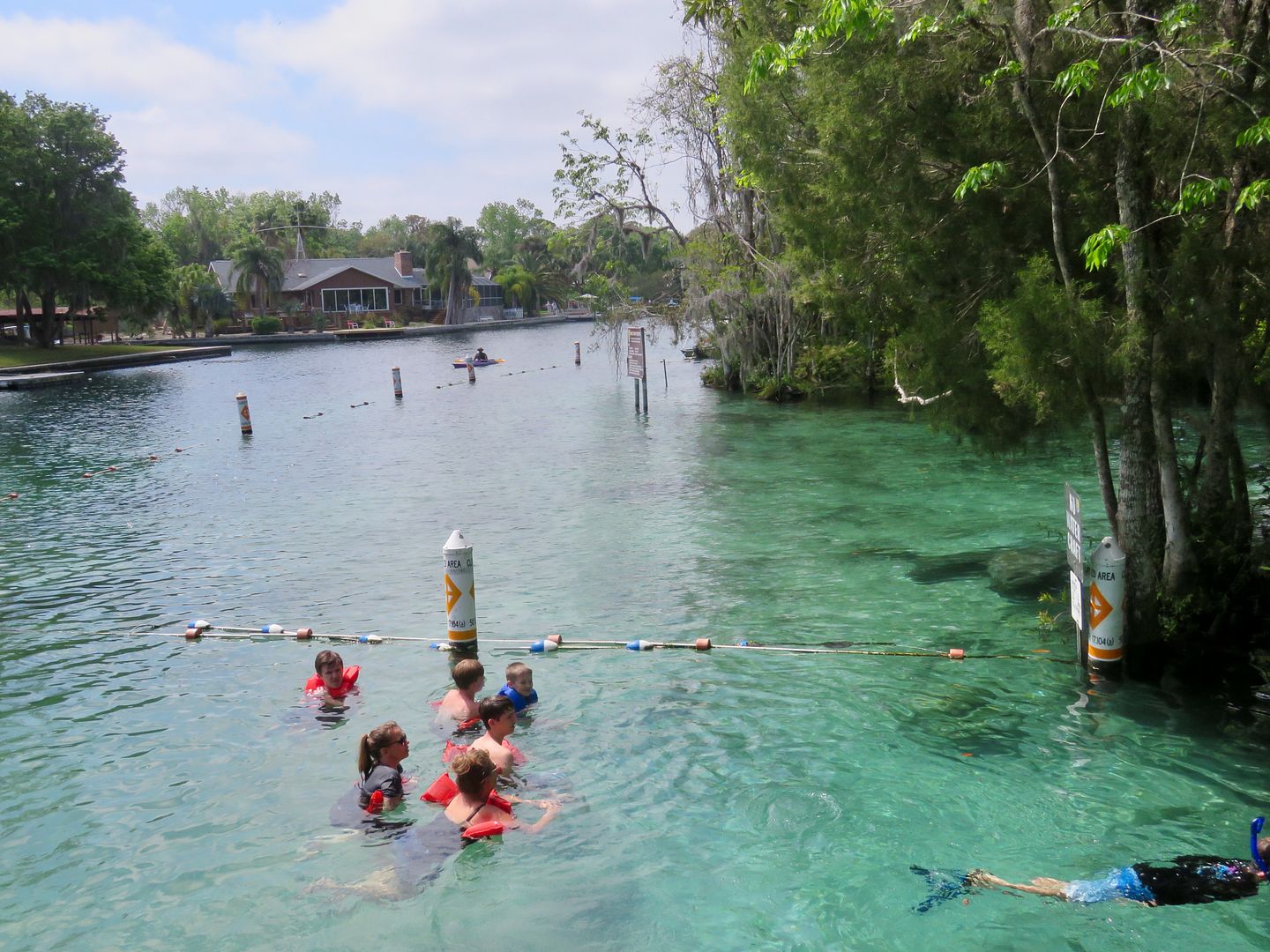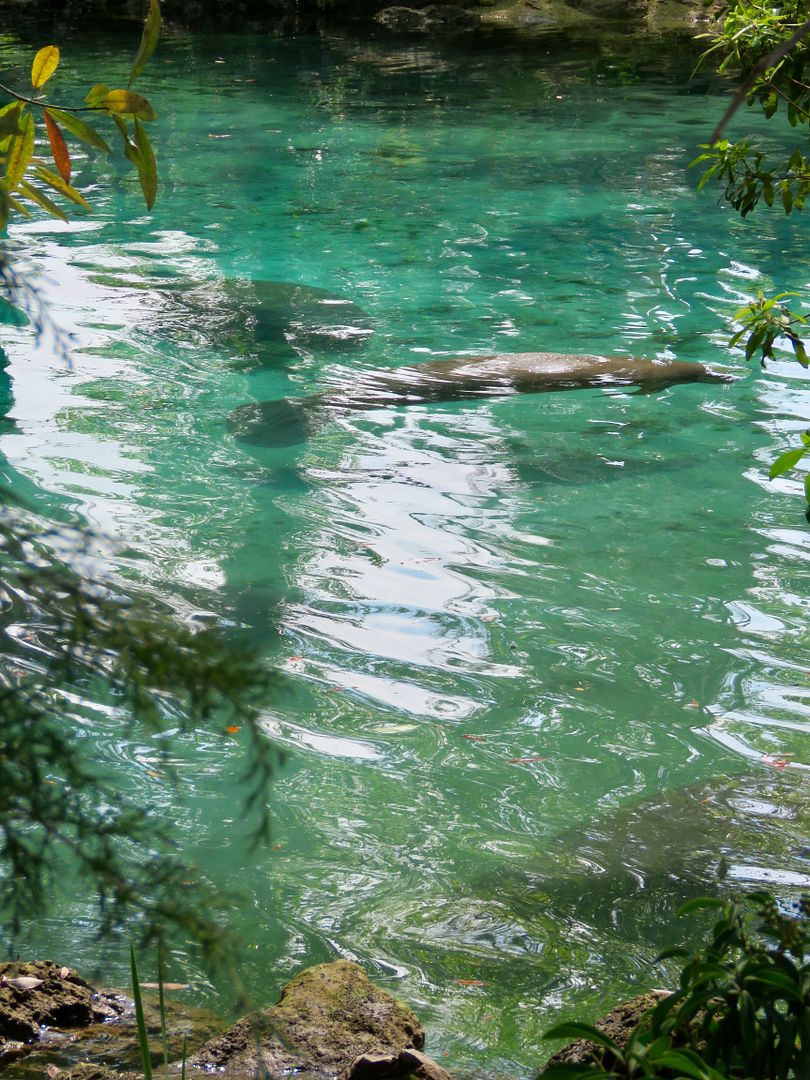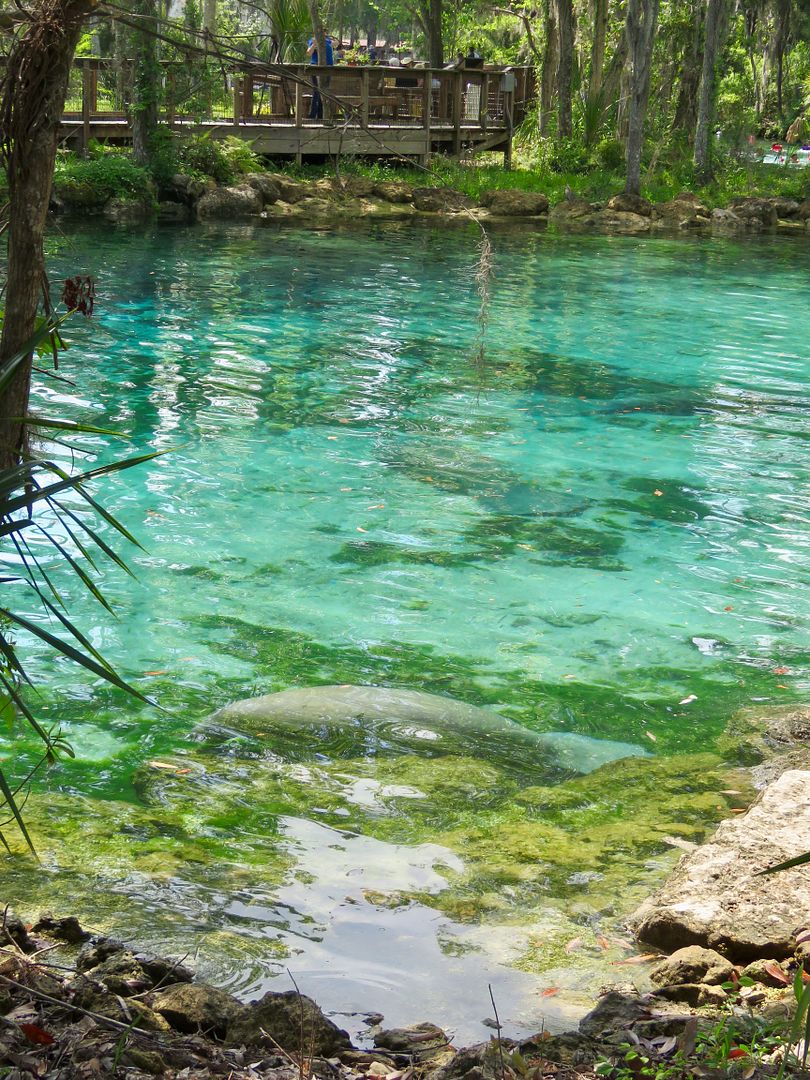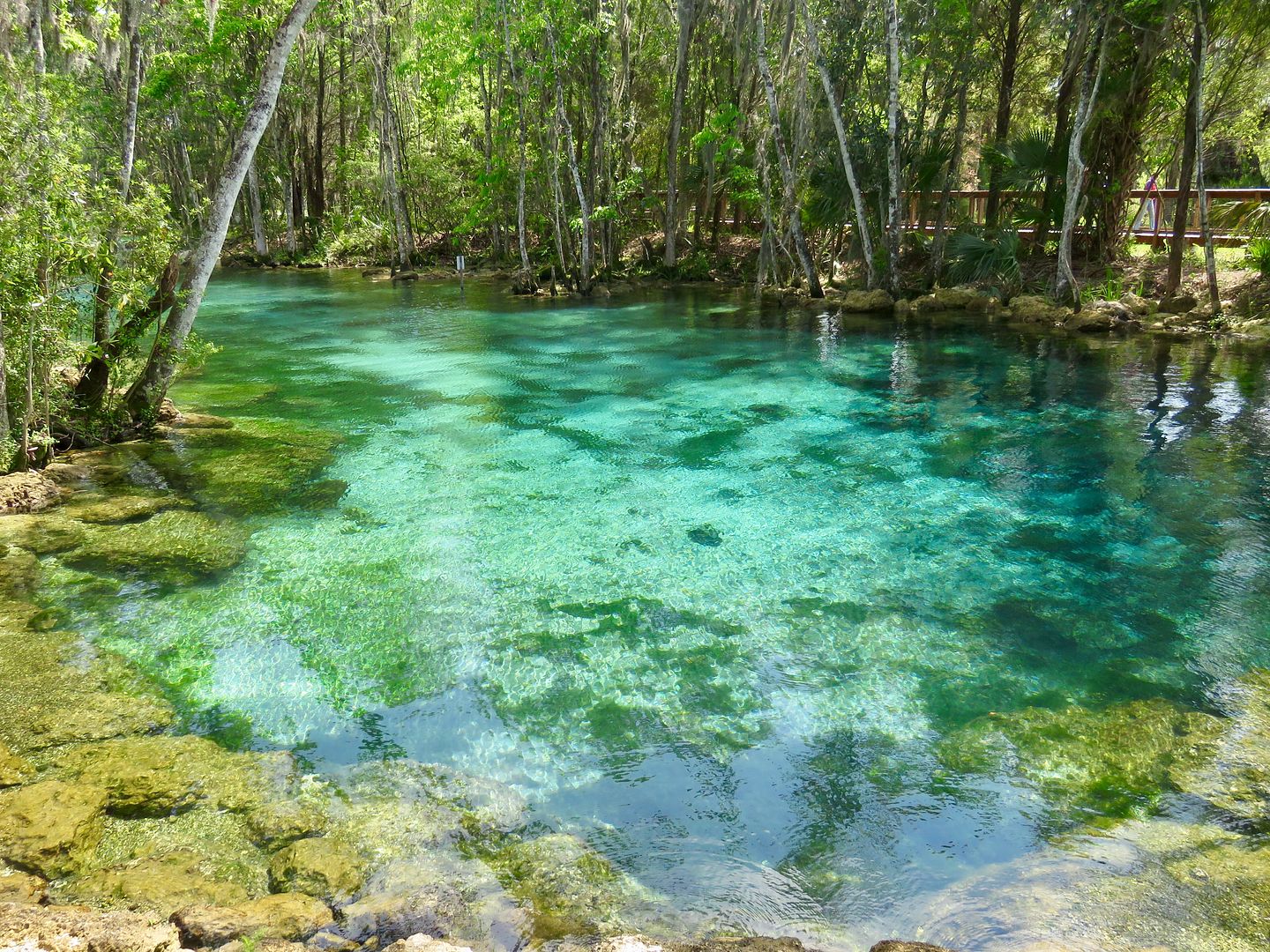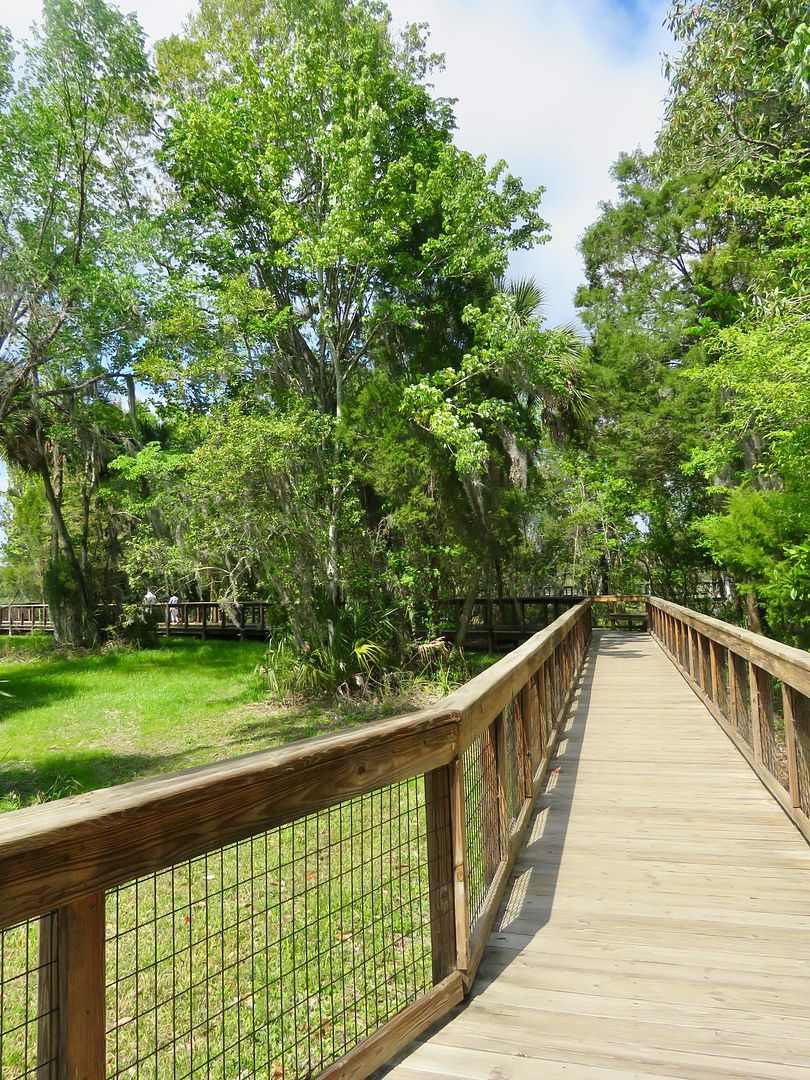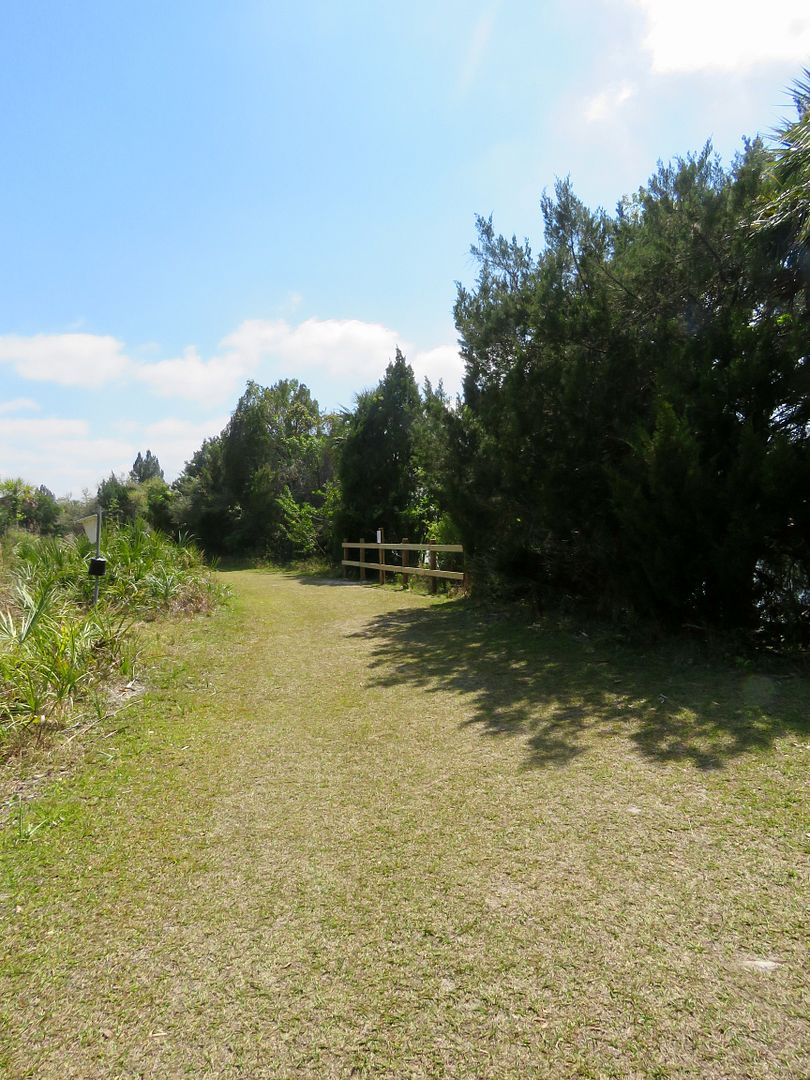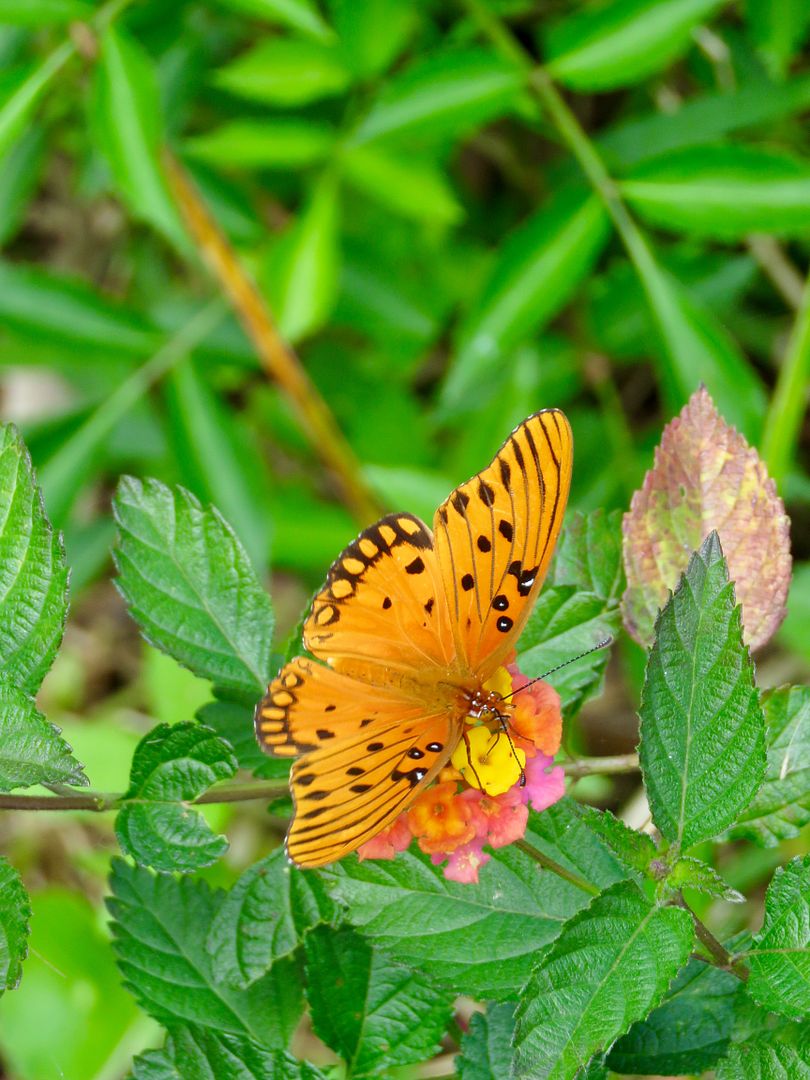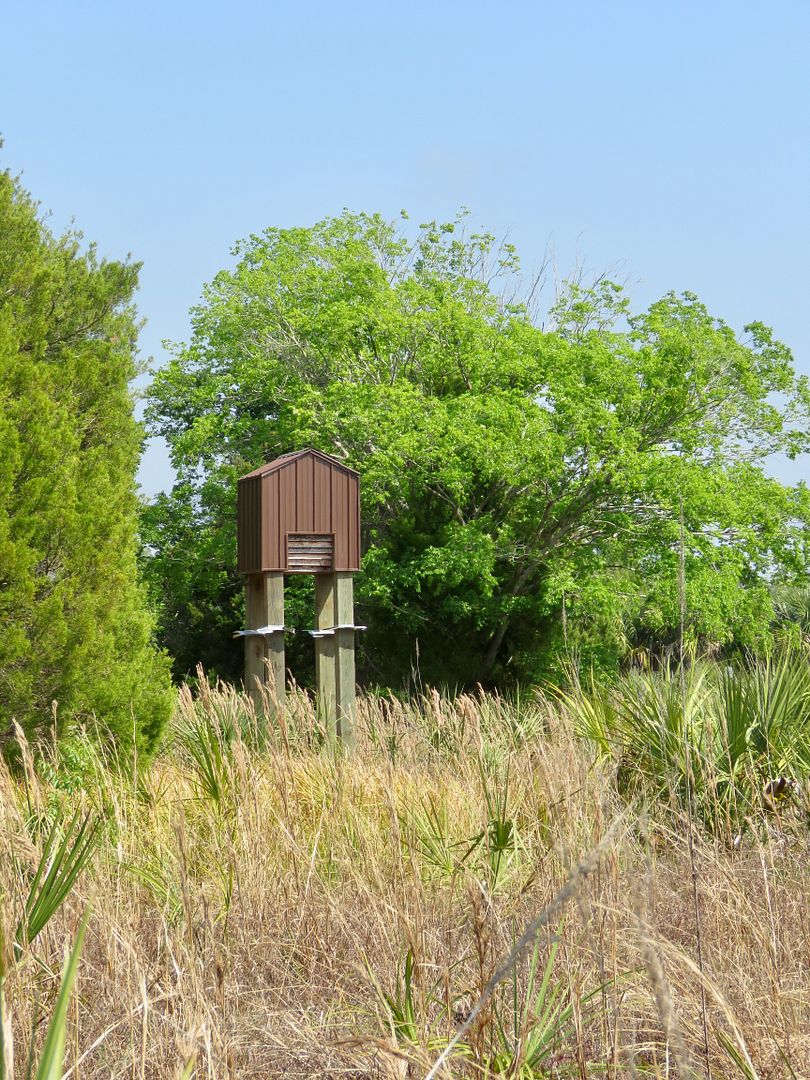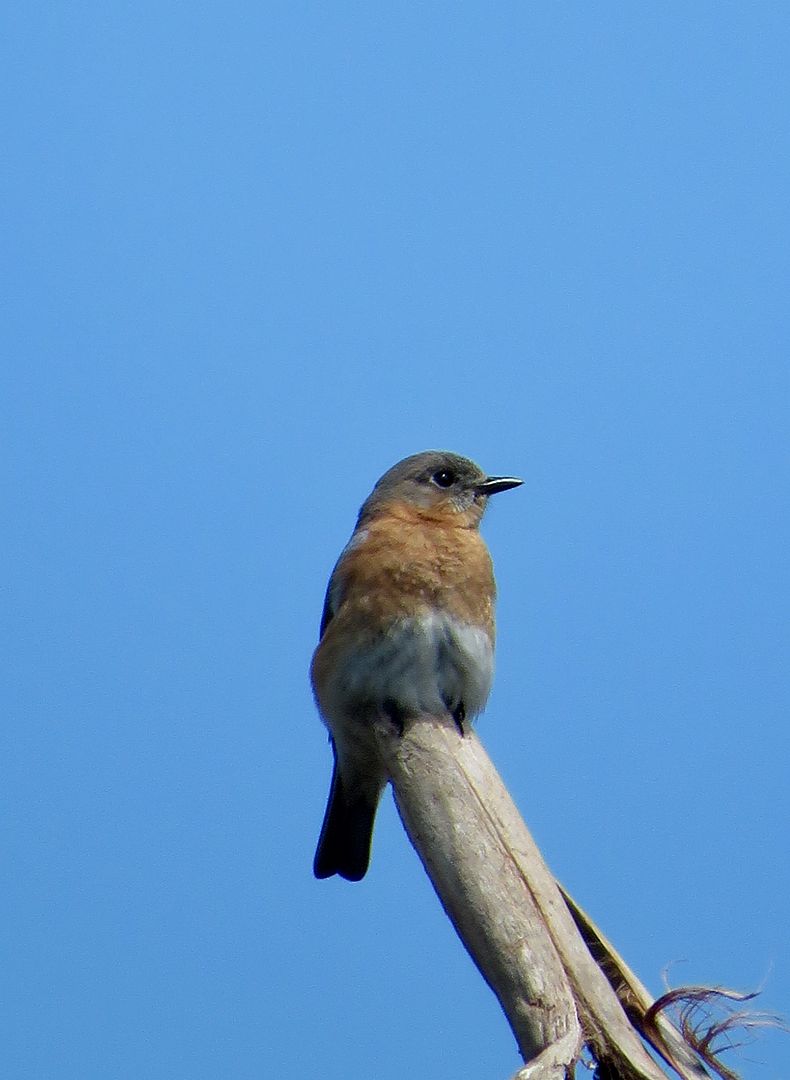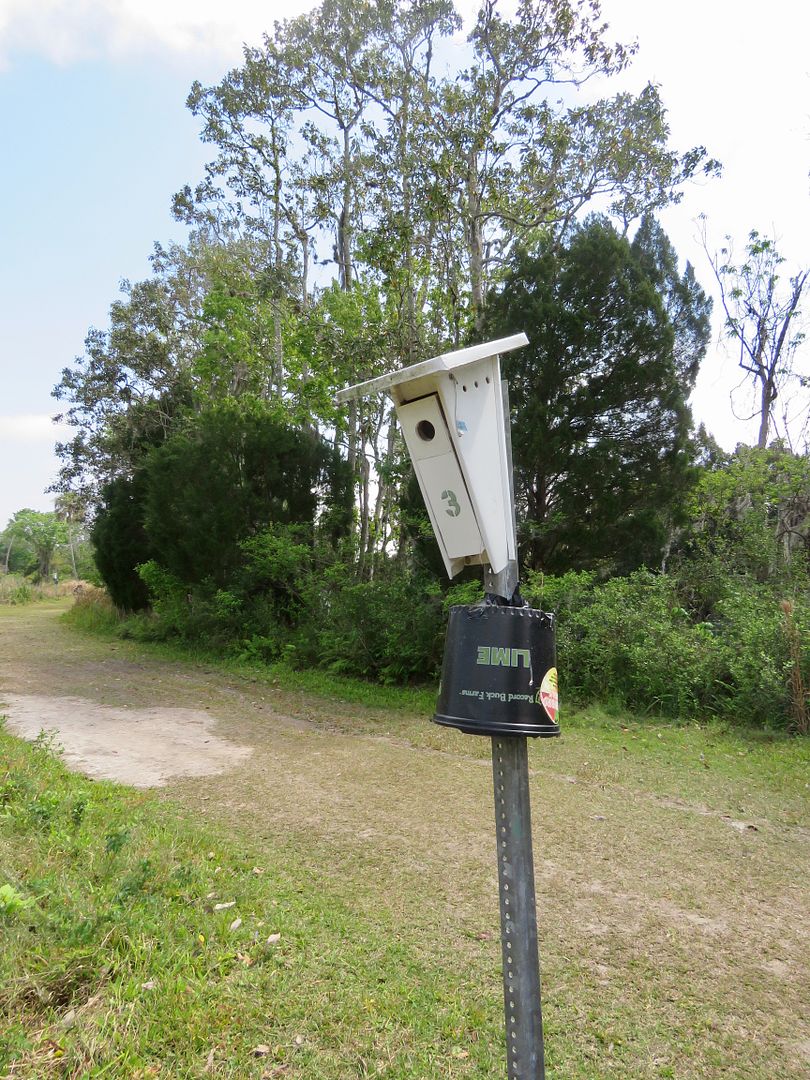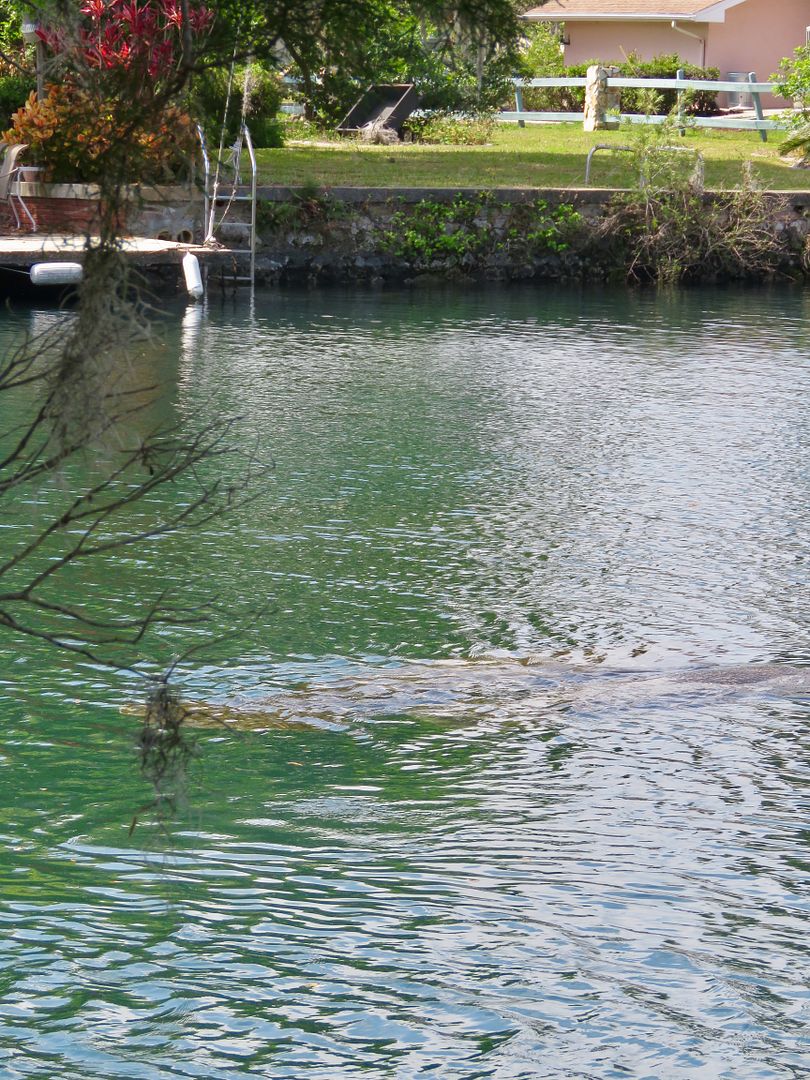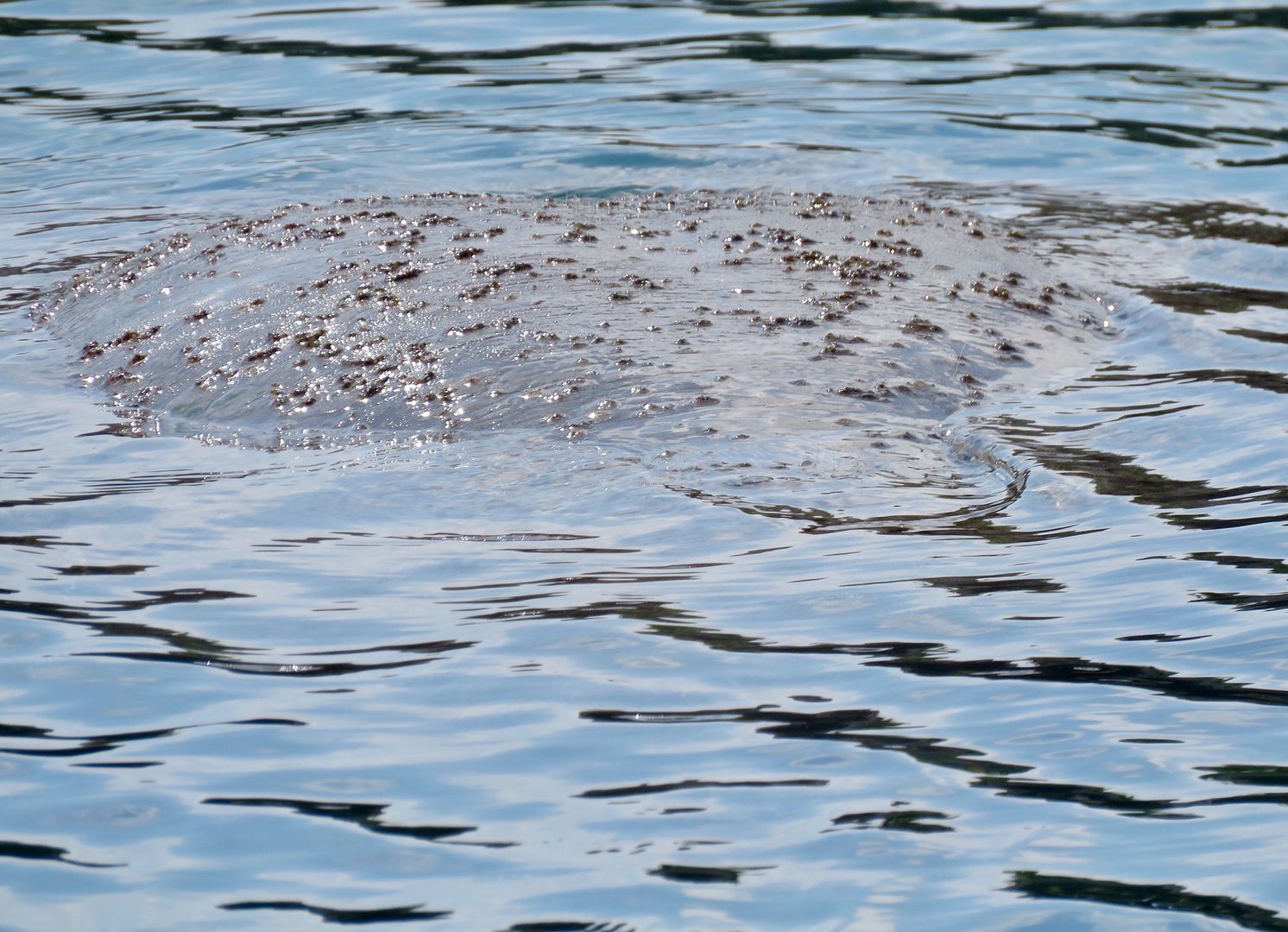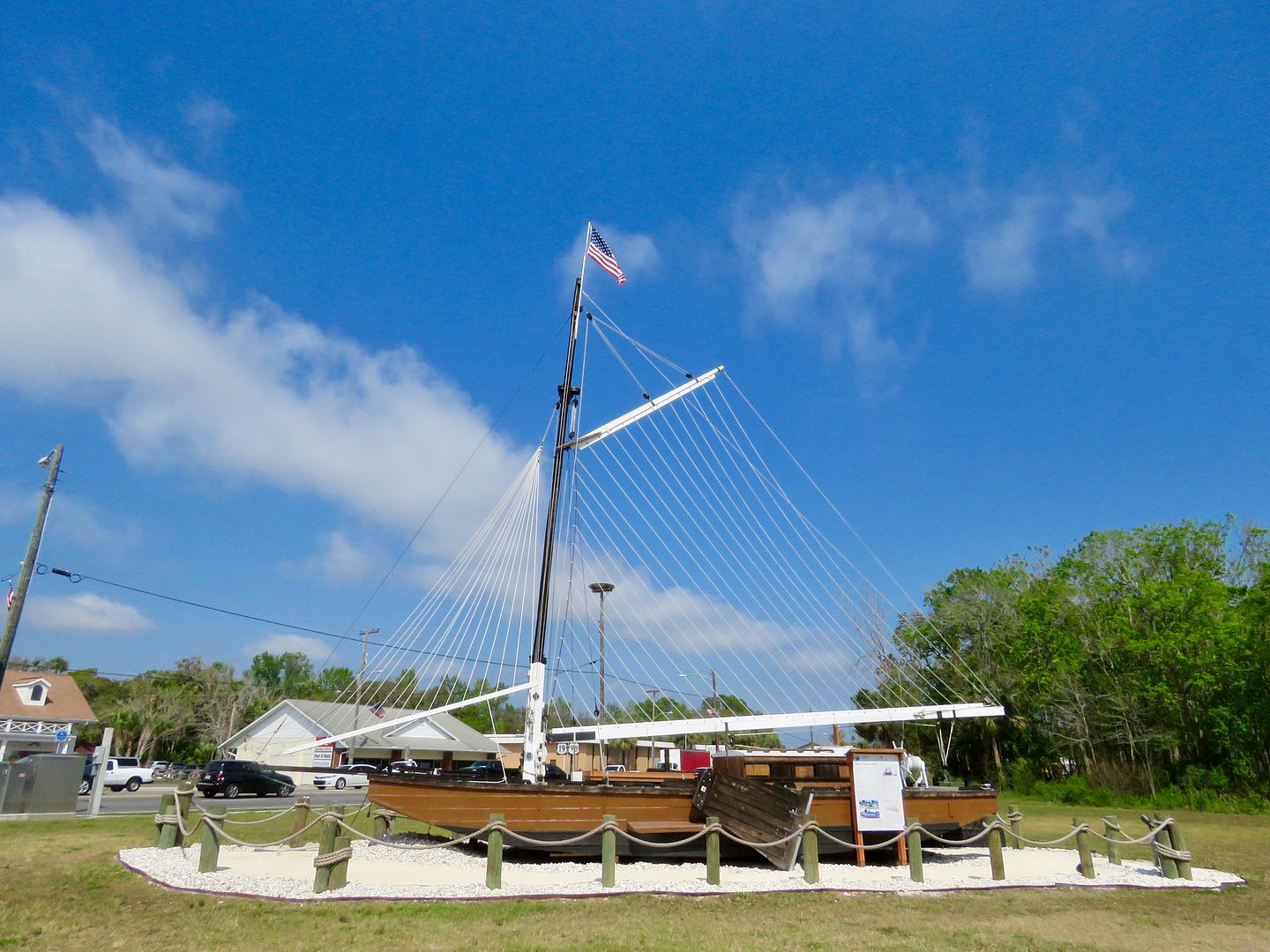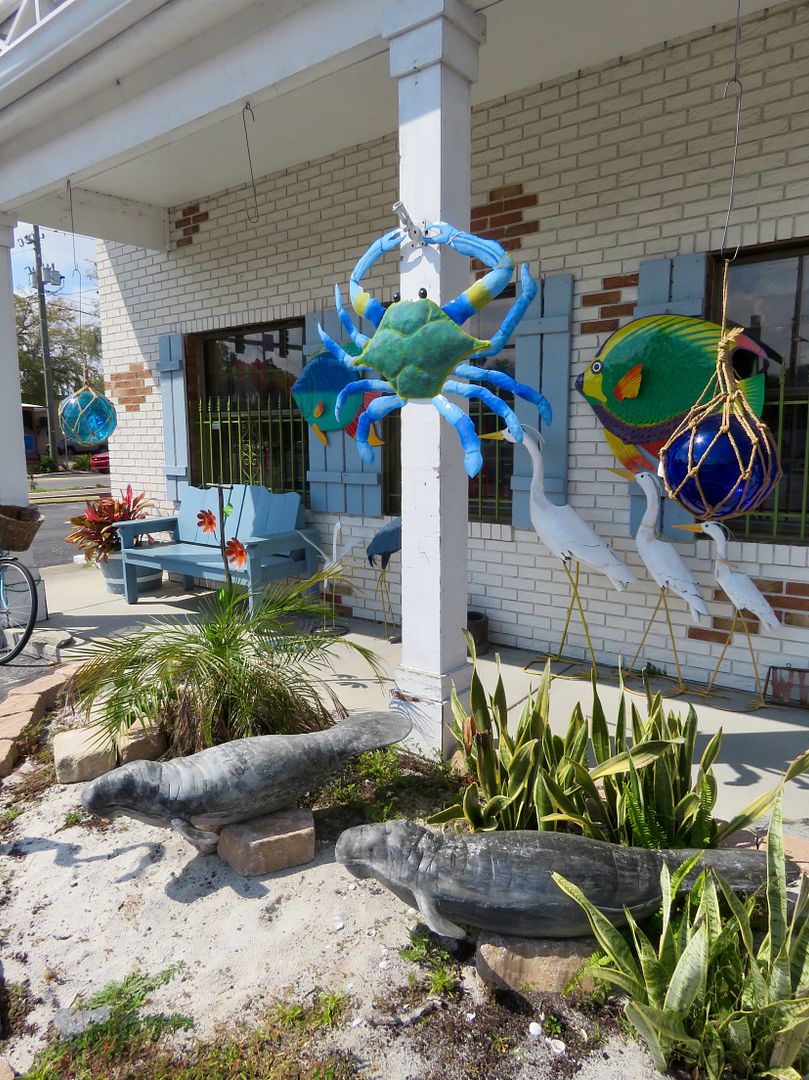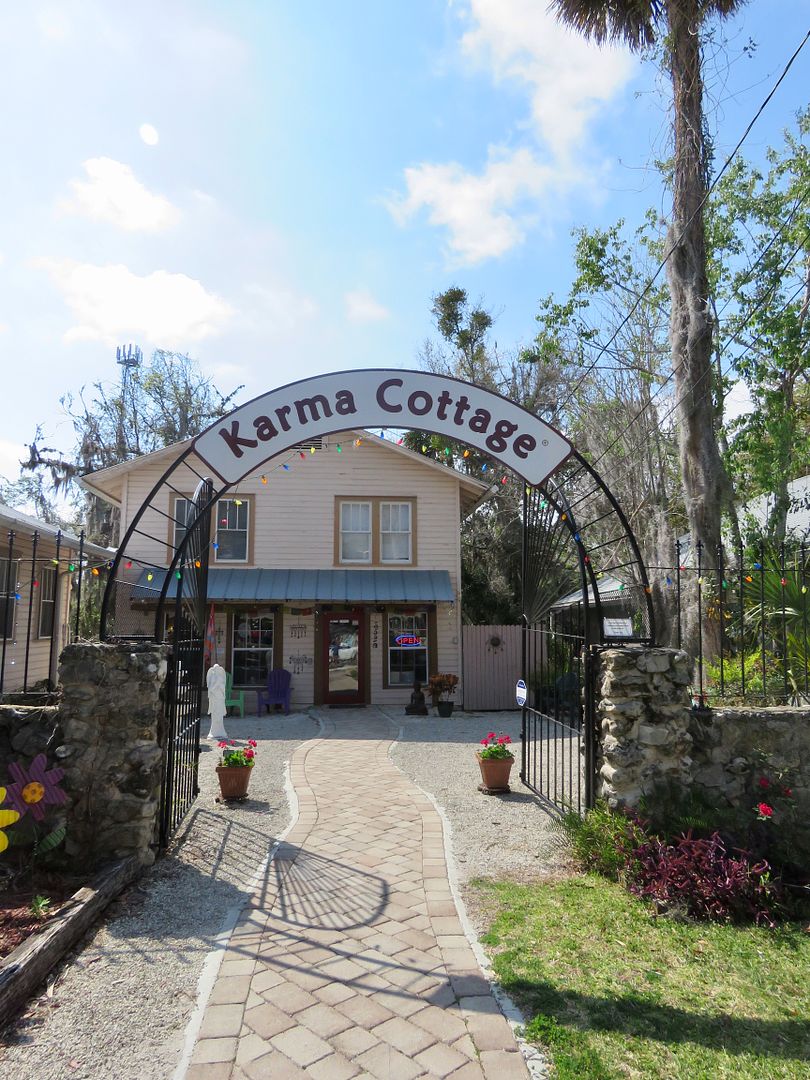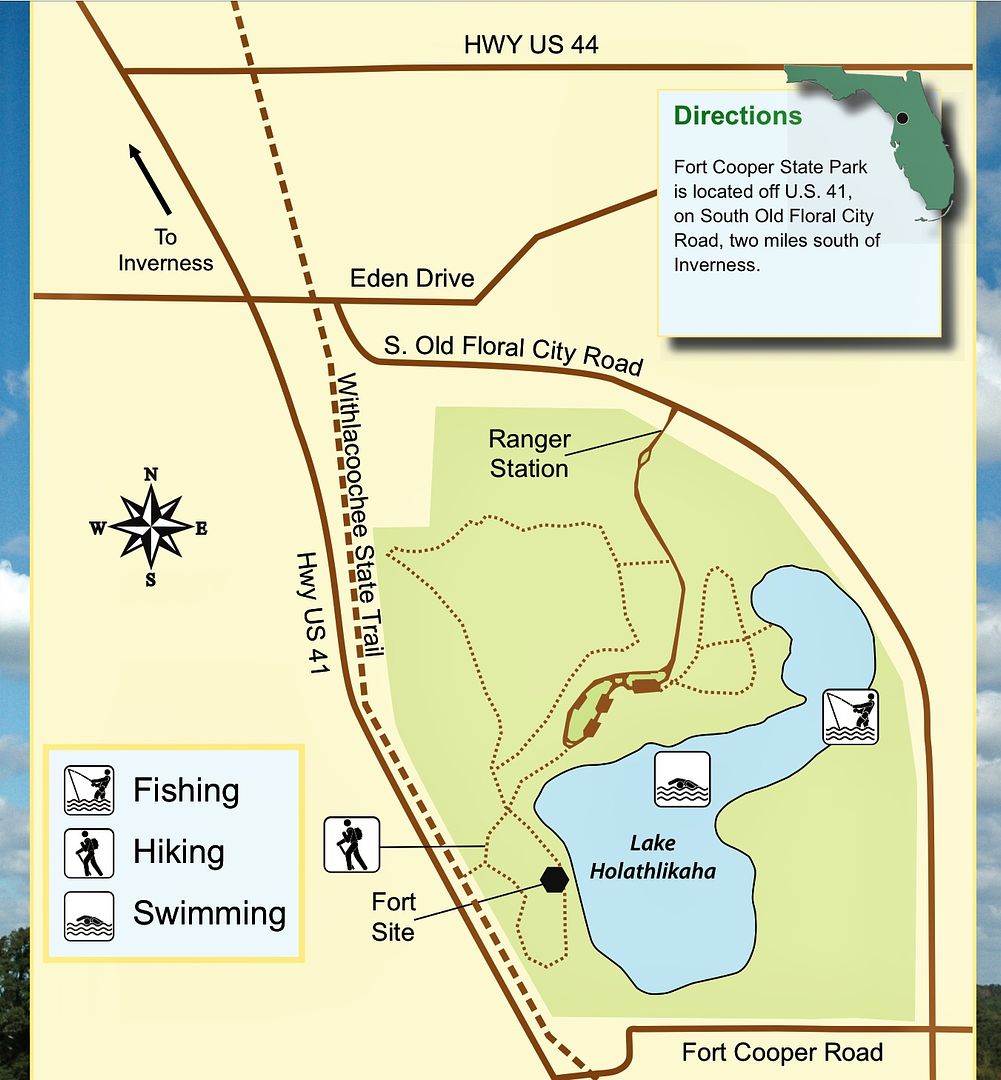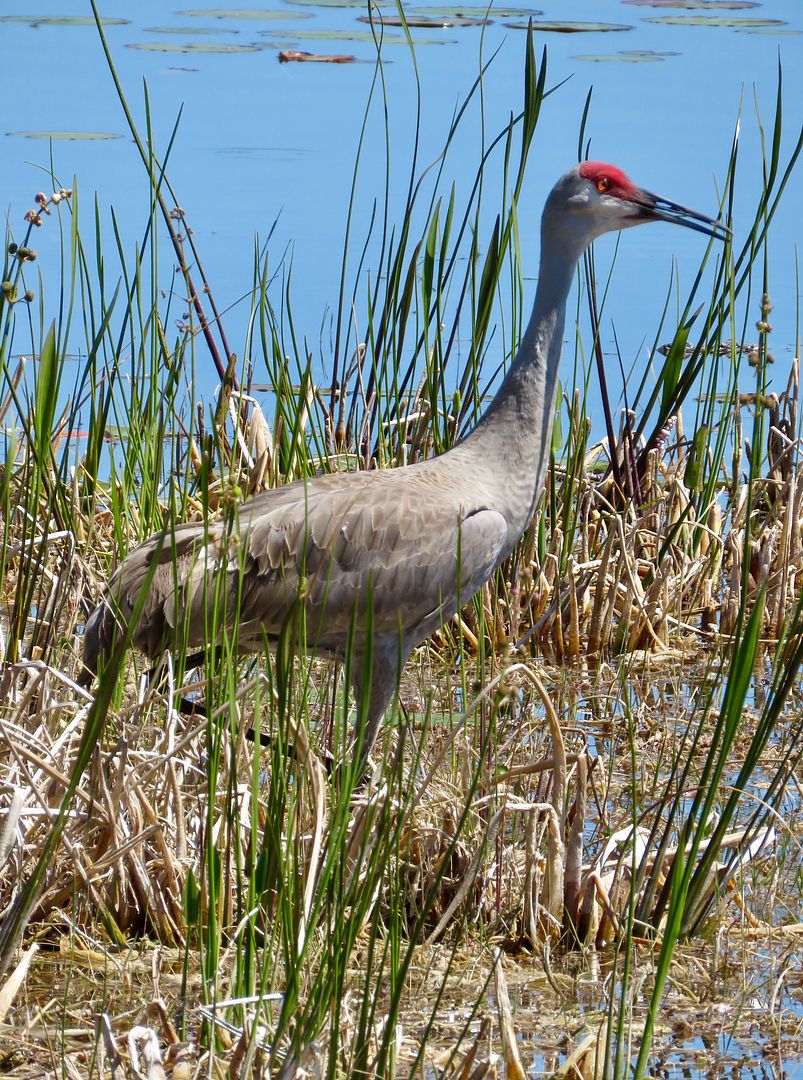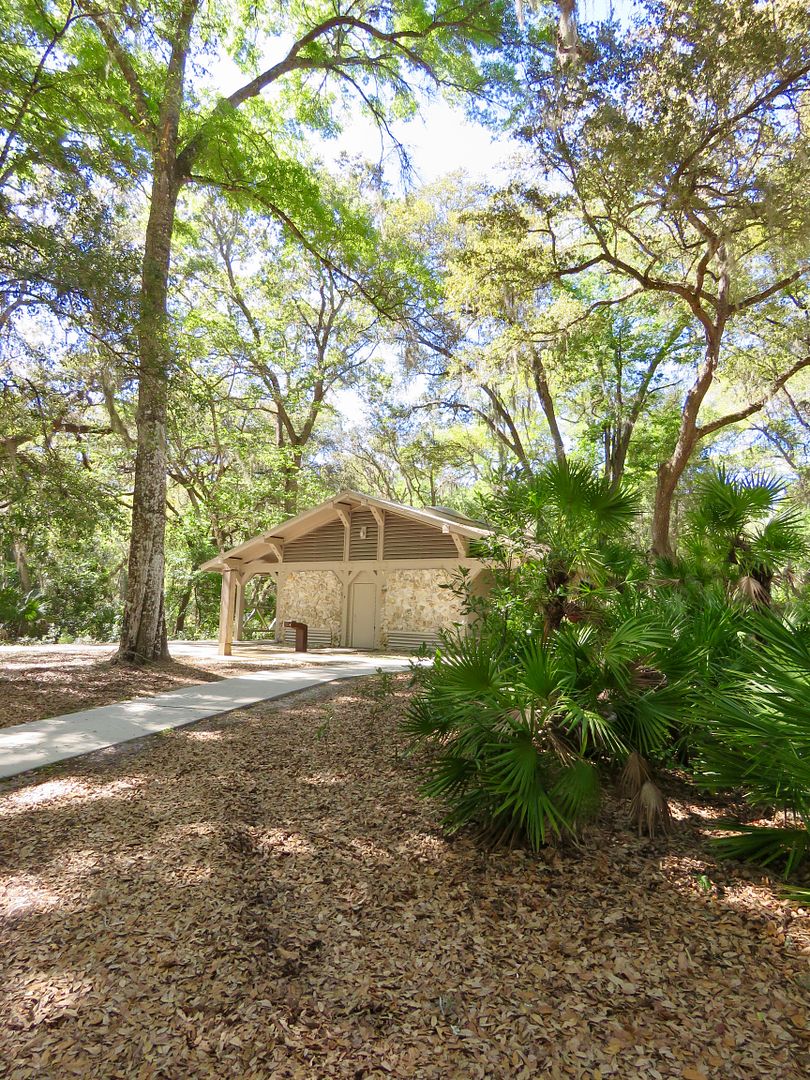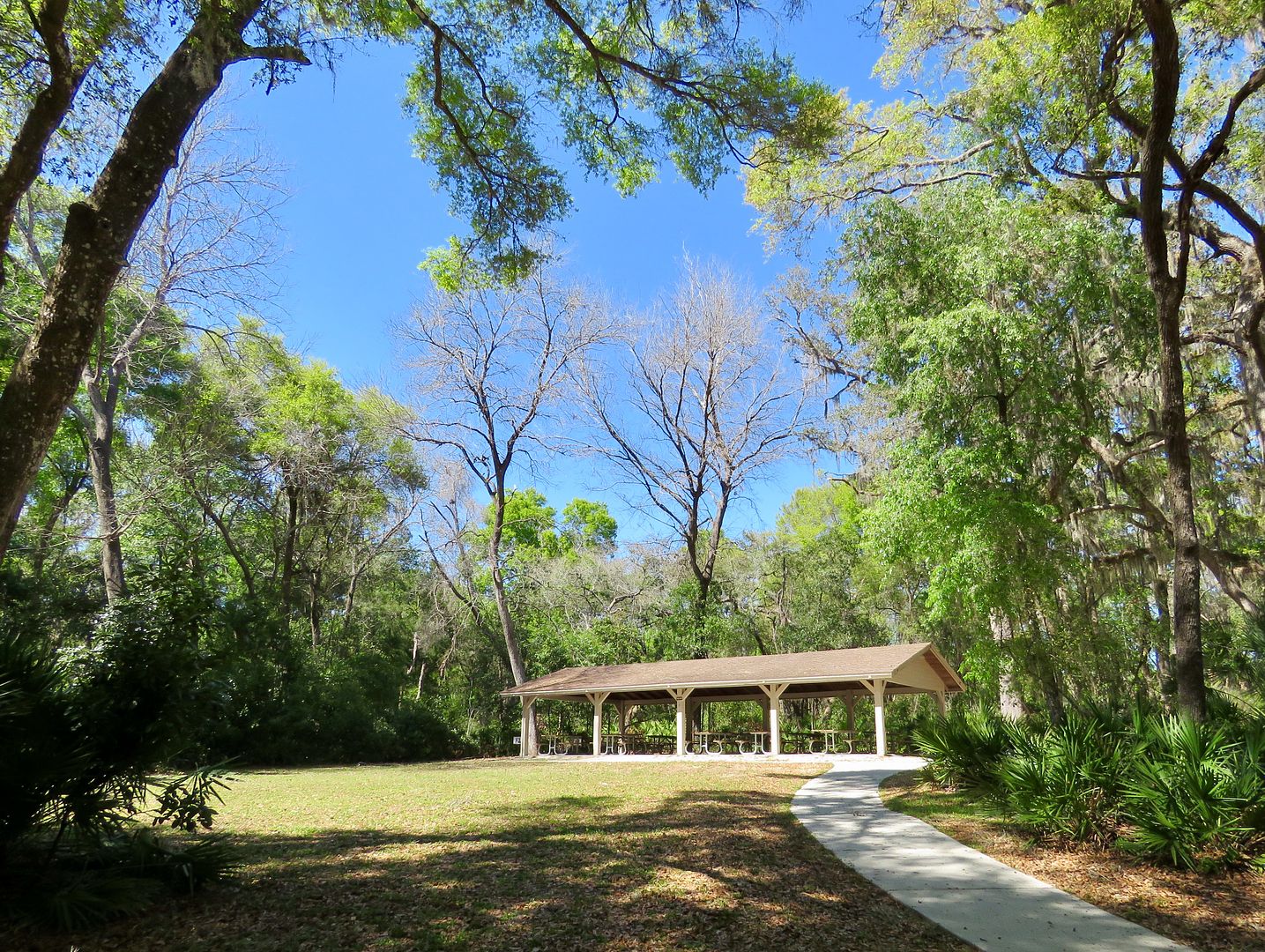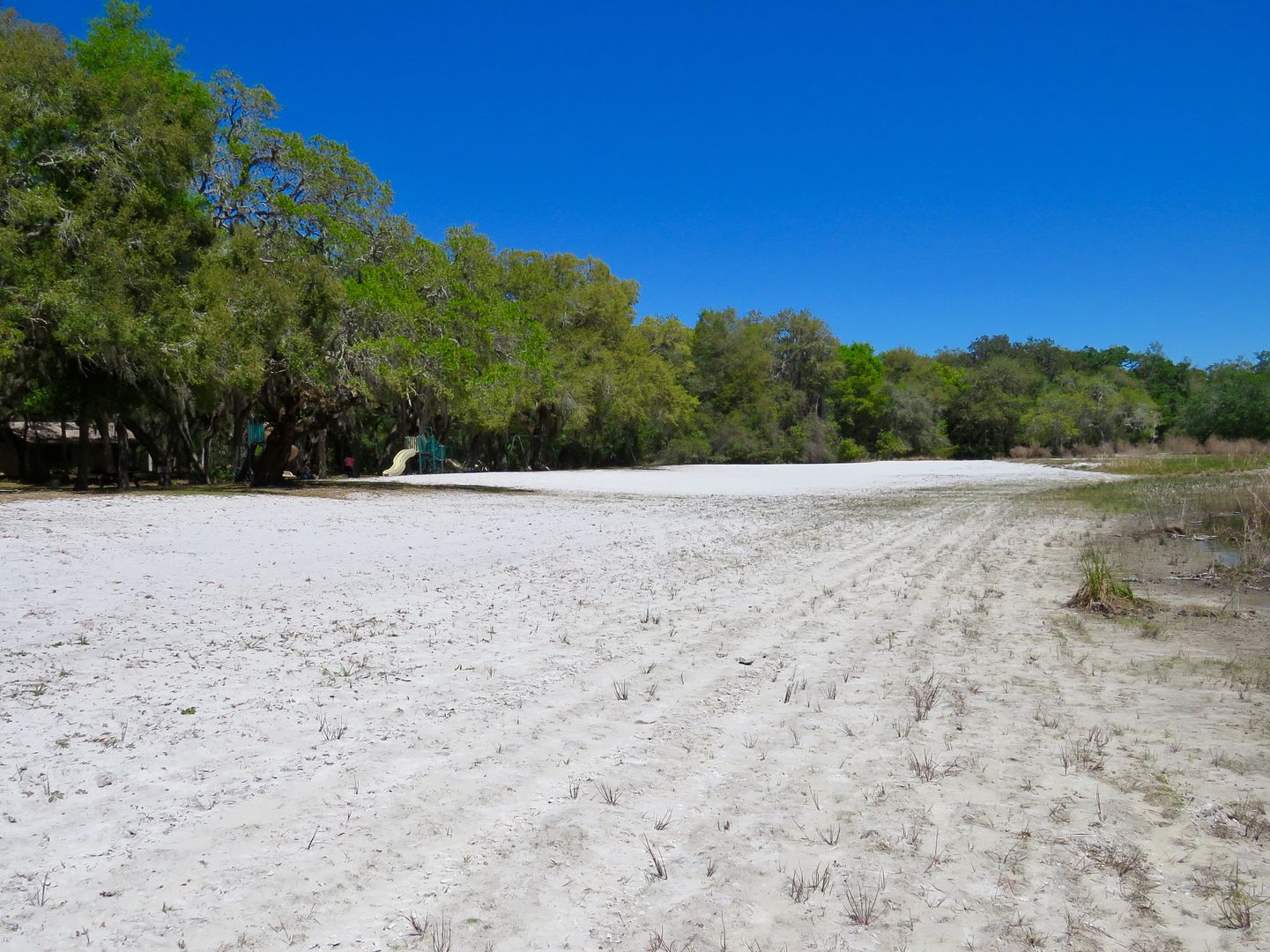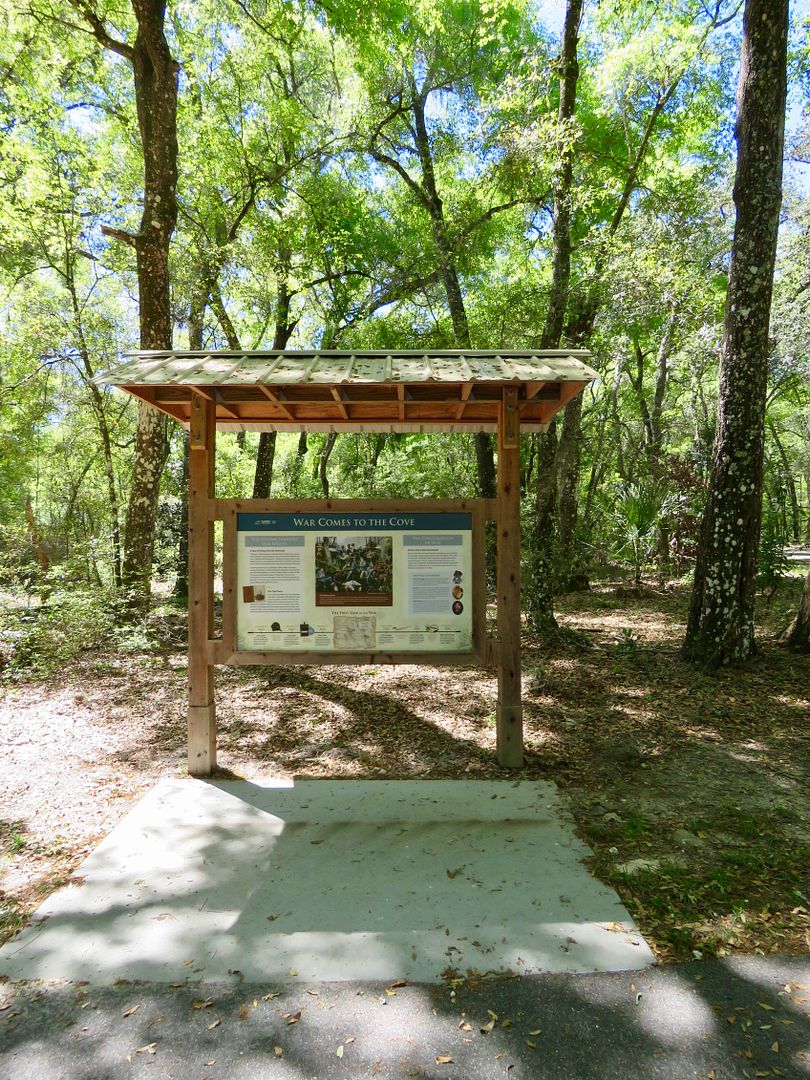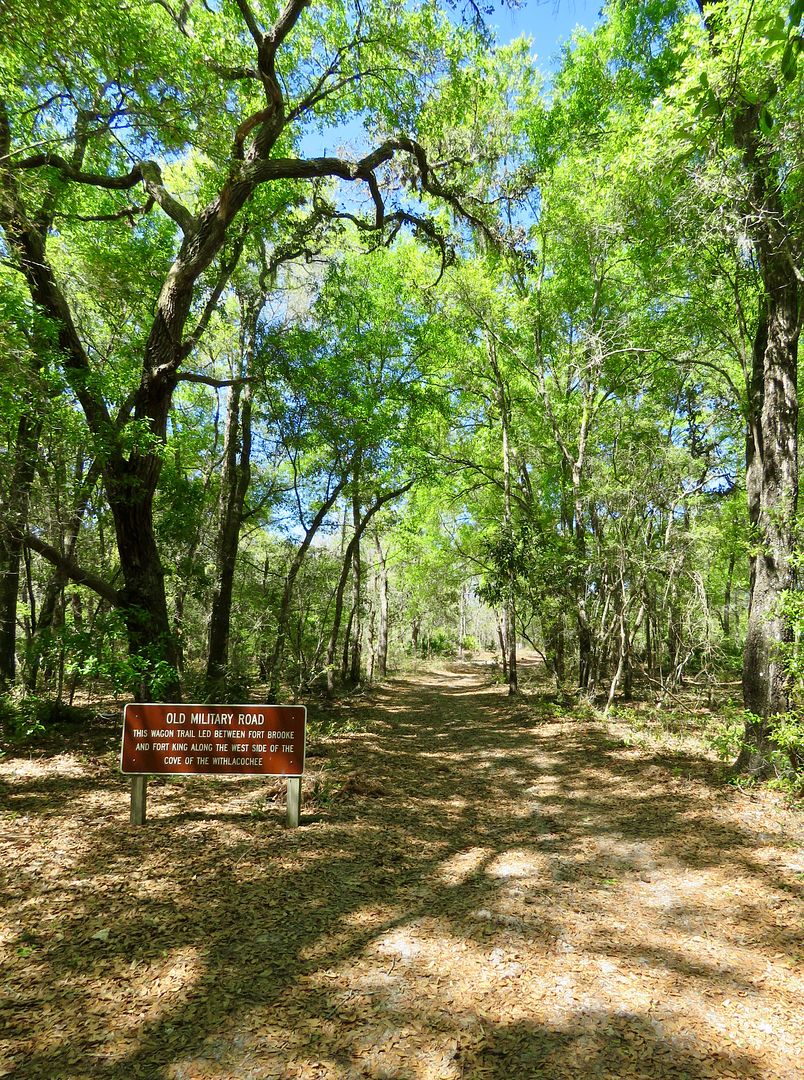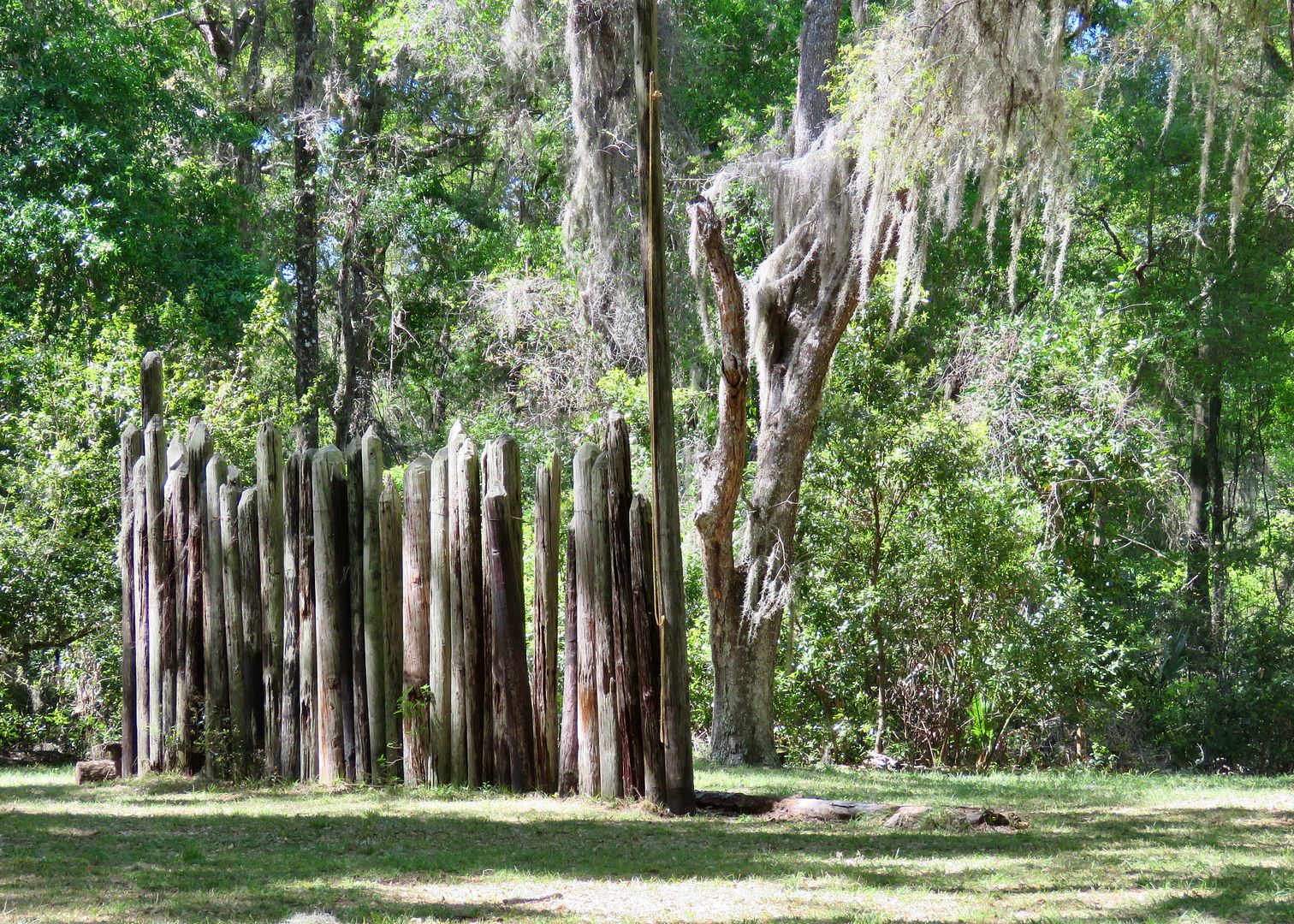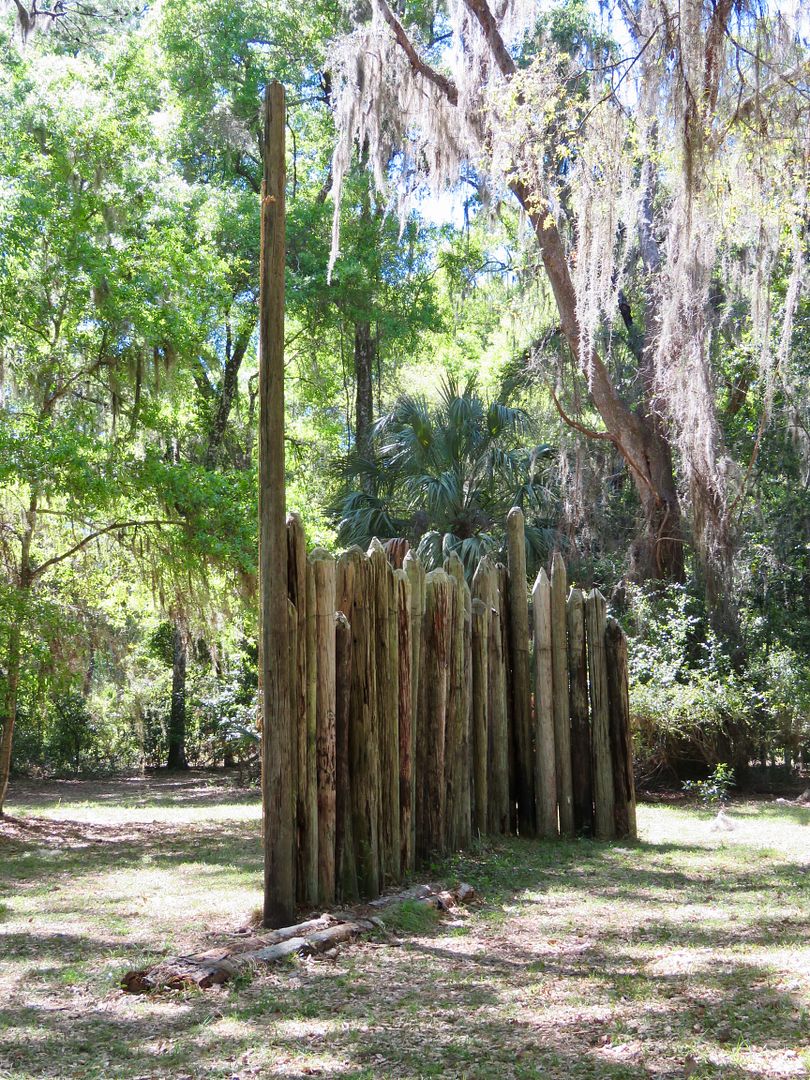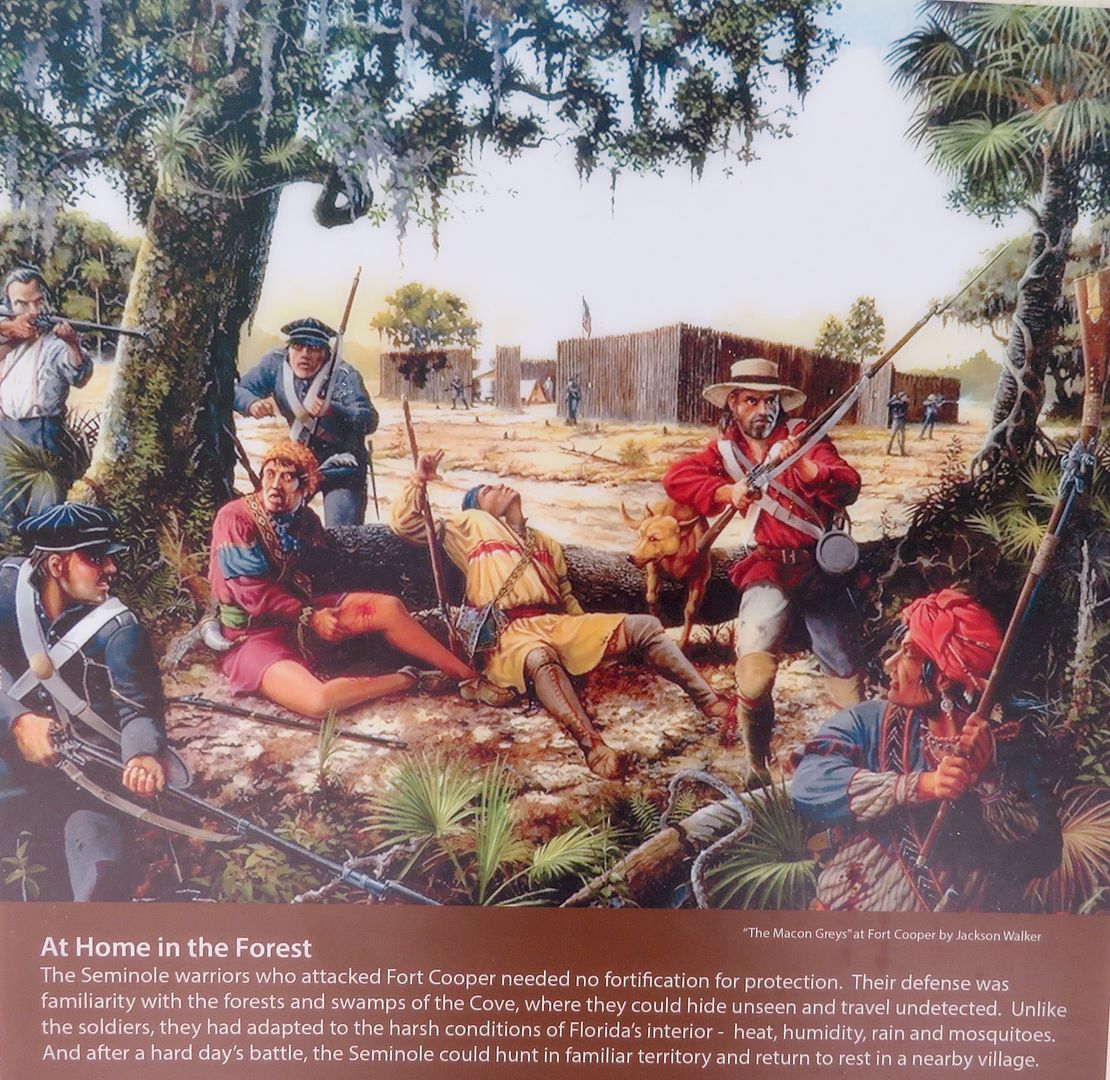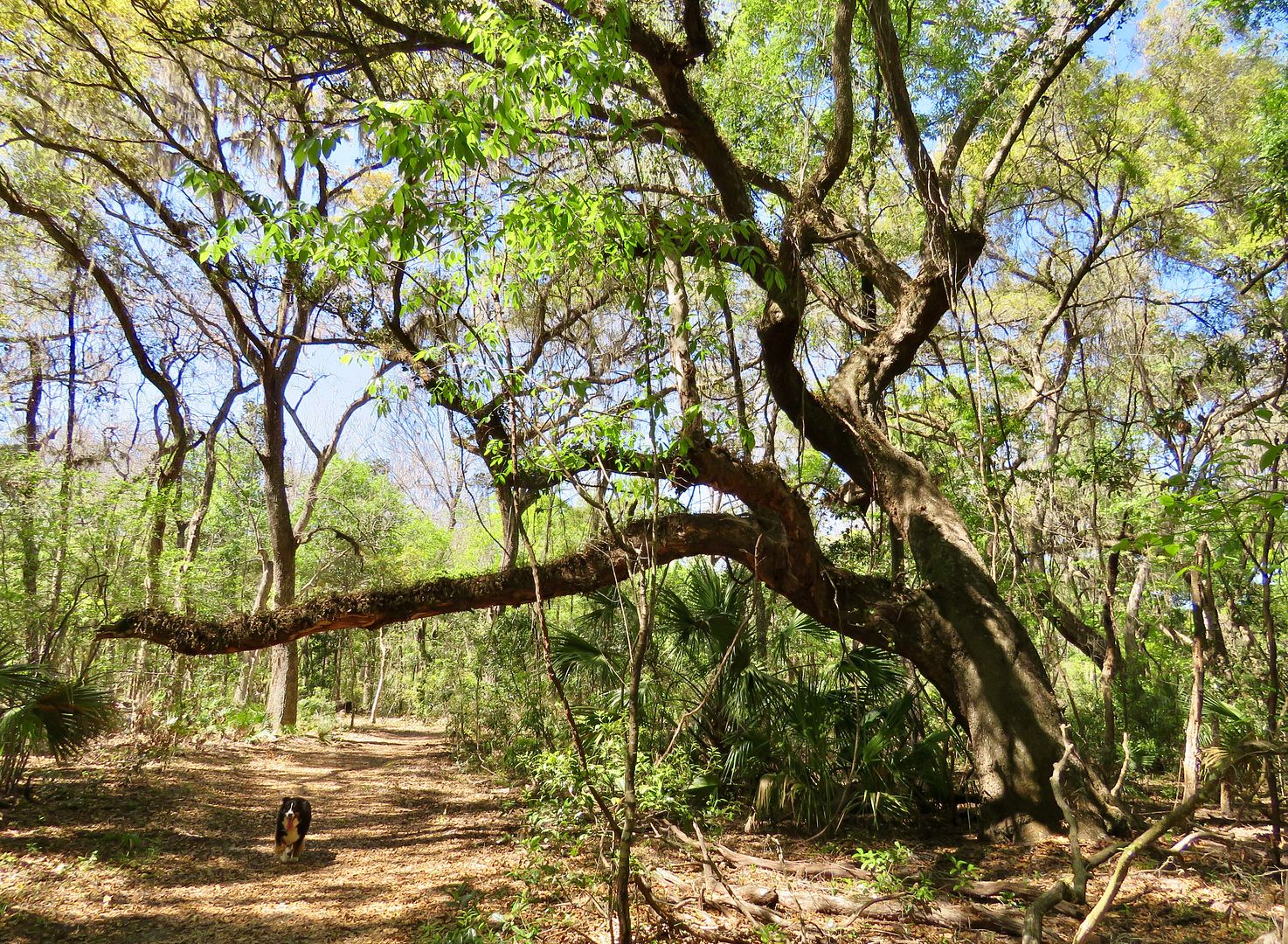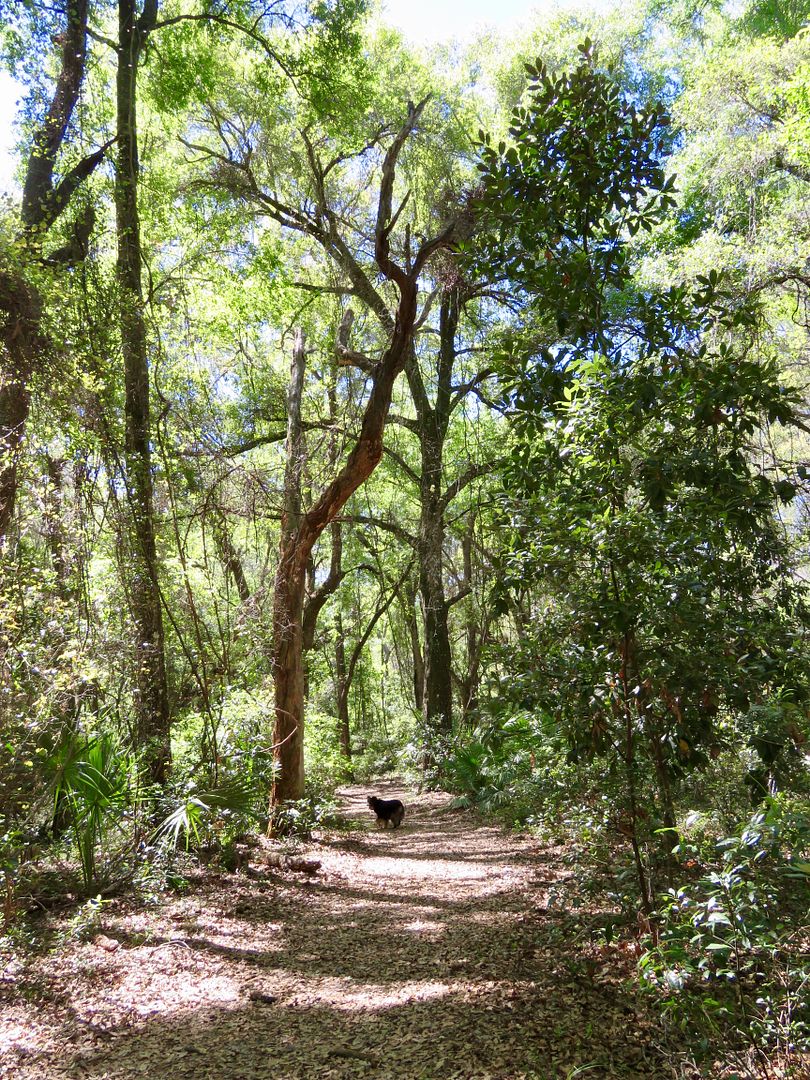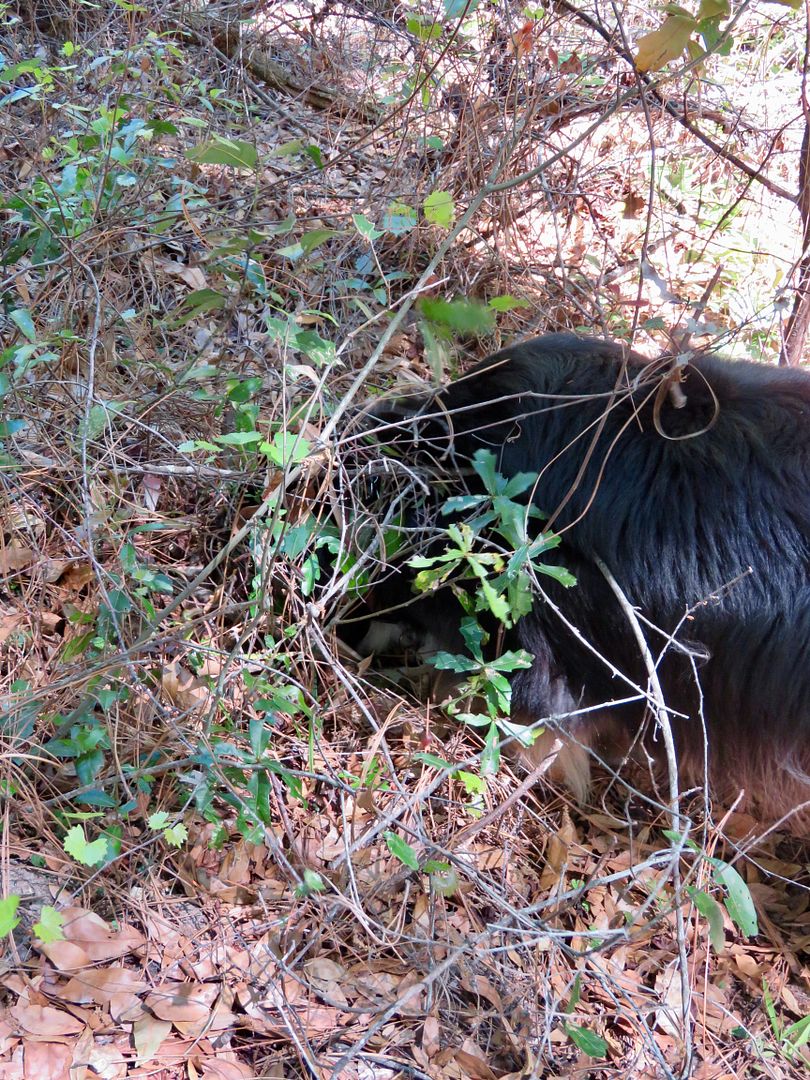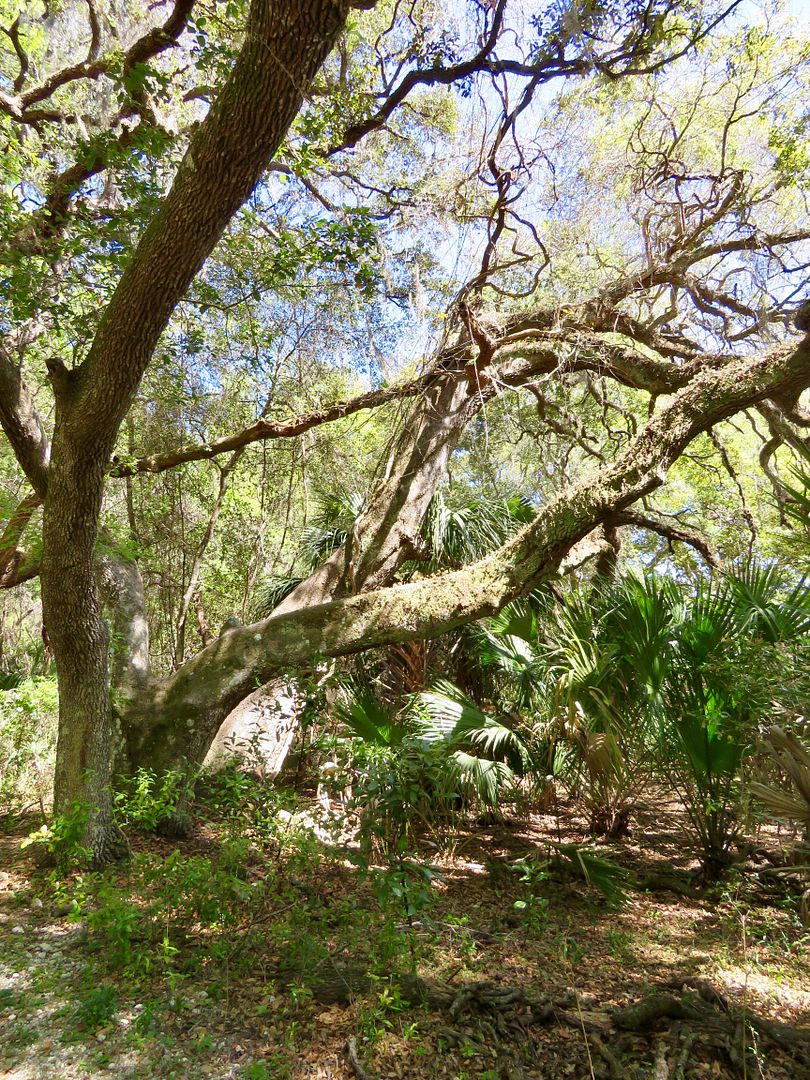Much of the Refuge is accessible only by boat. Below is a map, also available at their website.
Three Sisters Springs is the only area of the Wildlife Refuge that is accessible by land. And the Three SIsters Springs Trolley is the only way to visit it (no private vehicles allowed). Tickets are purchased at the Three Sisters Springs Center located on US 19 behind the sheriff's building. Honestly, we drove right past it as it is located when we first got to town. But we drove around the block and found it easily enough.
Information about manatees and some paintings of them decorate the interior of the Center. Restrooms are also available here.
The cost (for the day) is $12.50/seniors and $15/adults. The trolley runs every 30 minutes. There are two stops through the small town of Crystal River (where you can get off/on the trolley to enjoy restaurants and shops in town) Walking tours from the springs are also available and reservations can be made here or on line.
The trolley left about five to ten minutes after we purchased our tickets. It is only a short drive to Three Sisters Springs.
A boardwalk encircles the Three Sisters Springs area providing great views of manatees.
The water is very clear and 74 degrees F year-round. Three Sisters comprises 3 of the 70 springs in the 600-acre area of Crystal River/King's Bay. Millions of gallons of water are discharged from these three springs daily. It is well known as a winter refuge for manatees due to the warm water. There have been hundreds of manatees here during cold fronts and tidal changes (usually after November 15). On the day we visited there were about a dozen manatee in the sanctuary areas (behind buoys and ropes).
Manatees spend much of their lives underwater feeding and resting. In fact, they can stay submerged 15 to 20 minutes when at rest, but must come up more frequently for air when they are feeding on underwater plants (6 to hours a day!) In the three photos below, you can see a manatee sticking just it's nose up for air.
Adults are 9 to 10 feet long and average about 1,000 pounds, although some large males can weight 3,000+ pounds. They can live in fresh, brackish, or salt water habitats and frequently move between these different marine environments.
We walked along the boardwalk to the point where Three Sisters Springs flow into King's Bay. There is another roped off sanctuary area here (swimmers and boats are forbidden).
Kayaking or swimming in this area is available through other tour companies in Crystal River. In the photo above, the family was hoping the manatee and her calf would swim into Three Sisters Springs wth them, but the manatees kept their distance. Babies stay with their mothers for around two years.
We continued along the boardwalk to the north end of the springs enjoying the beauty of this place.
Beyond the boardwalk is a trail along the water where we saw this beautiful butterfly, interesting plants/trees, and a bat house.
I believe this is an Eastern Bluebird. There are birdhouses along the trail that are used by them.
More manatees could be seen in the water at various points along the trail. However, the water is not as clear as Three Sisters so they can only be seen when they are very close to the surface or come up for air.
The barnacles on the back of this manatee indicate that it has recently entered the bay from the Gulf of Mexico.
Interestingly enough, the manatees' closest living relatives are elephants. The manatees in Florida are a subspecies of West Indian manatees and are endangered due to shrinking habitats. The majority of manatee injuries and deaths are caused by motor boats (most have scars from encounters with them). Other deaths occur when they are trapped in flood gates or entangled in discarded monofilament fishing line.
We caught the trolley to return to our car, but hopped off at the second stop (before the Center) to walk a couple of blocks through the town of Crystal River. This sailing scow is a replica of ones used during the 1800s. During the Civil War, one captured by the Union Army was sued to attack Confederate shore posts. It is 36' long and 12' wide.
There are lots of cute shops with unique gifts in Crystal River and several nice restaurants in the area as well.
We don't usually like to leave our dog, Sadie, for this long, but dogs are not permitted anywhere near the Refuge. So, we did not linger too long in Crystal River.
Three Sisters Springs is a fantastic place to get a good look at manatees due to the very clear water. Plan your trip when there is a cold spell, because that is when more seek the warmth of the springs. They seek warmer waters when the bay is 68 degrees or colder. It is magical to see these gentle marine creatures up close.
For additional information about Three Sisters and the tours available at the Center, check out this site: www.threesistersspringsvisitor.org/


